Leonard Wartofsky
President, 1995
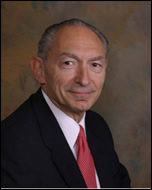 Leonard Wartofsky, MD, MPH, MACP Leonard “Len” Wartofsky, MD, MPH, MACP is Emeritus Chairman of the Department of Medicine at Washington Hospital Center and a Professor of Medicine at Georgetown University School of Medicine as well as at the Uniformed Services University of the Health Sciences, and George Washington, Howard, and Maryland University Schools of Medicine. He holds MS, MD, and MPH degrees from George Washington University and trained in endocrinology at Harvard University/Boston City Hospital under Sidney Ingbar, MD. At Walter Reed Army Medical Center, he was Director of Endocrinology and then Chair, Department of Medicine, and Consultant in Medicine to the Surgeon General.
Leonard Wartofsky, MD, MPH, MACP Leonard “Len” Wartofsky, MD, MPH, MACP is Emeritus Chairman of the Department of Medicine at Washington Hospital Center and a Professor of Medicine at Georgetown University School of Medicine as well as at the Uniformed Services University of the Health Sciences, and George Washington, Howard, and Maryland University Schools of Medicine. He holds MS, MD, and MPH degrees from George Washington University and trained in endocrinology at Harvard University/Boston City Hospital under Sidney Ingbar, MD. At Walter Reed Army Medical Center, he was Director of Endocrinology and then Chair, Department of Medicine, and Consultant in Medicine to the Surgeon General.
Dr. Wartofsky has been elected to several honorific societies, including the American Society of Clinical Investigation, Association of American Physicians, Association of Professors of Medicine, and as Governor of the American College of Physicians. He is past President of both the American Thyroid Association and The Endocrine Society. Among his many awards, he has received the John B. Stanbury Pathophysiology Medal and the Lewis E. Braverman Distinguished Lectureship Award of the American Thyroid Association.
Dr. Wartofsky’s major clinical and research interest is in the management of patients with thyroid cancer, and he is the author of over 400 articles and book chapters in the medical literature. He has served as the editor of several endocrine texts and was the Editor-in-Chief of both The Journal of Clinical Endocrinology and Metabolism and Endocrine Reviews.

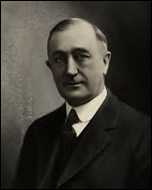 Edwin Plummer Sloan Dr. Sloan was born in Missouri and graduated from medical school in 1898. Following a surgical residency, he received additional training at clinics in Berlin, Germany. Dr. Sloan founded and was the first president of the American Association for Study of Goiter. The first meeting, with 215 registrants, took place on January 23-25, 1924 at St. Joseph’s Hospital in Bloomington, Illinois, where Dr. Sloan was on the surgical staff. The first session was held by Dr. E. P. Sloan, assisted by Drs. G. A. Sloan, Herman Wellmerling, J. D. Moschelle, and Geo. Newell. Four patients were operated under nitrous oxide oxygen anaesthesia, administered by Dr. Wm. Young. A number of scientific papers were also presented, including Dr. E. R. Arn, Dayton, Ohio. “An Analysis of Types of Goiter with Indications for Treatment.” and Dr. F. N. Wilson, Ann Arbor, Michigan. “Cardiac Disturbances in Association with Diseases of the Thyroid Gland.”
Edwin Plummer Sloan Dr. Sloan was born in Missouri and graduated from medical school in 1898. Following a surgical residency, he received additional training at clinics in Berlin, Germany. Dr. Sloan founded and was the first president of the American Association for Study of Goiter. The first meeting, with 215 registrants, took place on January 23-25, 1924 at St. Joseph’s Hospital in Bloomington, Illinois, where Dr. Sloan was on the surgical staff. The first session was held by Dr. E. P. Sloan, assisted by Drs. G. A. Sloan, Herman Wellmerling, J. D. Moschelle, and Geo. Newell. Four patients were operated under nitrous oxide oxygen anaesthesia, administered by Dr. Wm. Young. A number of scientific papers were also presented, including Dr. E. R. Arn, Dayton, Ohio. “An Analysis of Types of Goiter with Indications for Treatment.” and Dr. F. N. Wilson, Ann Arbor, Michigan. “Cardiac Disturbances in Association with Diseases of the Thyroid Gland.”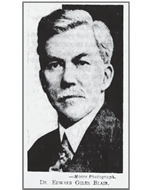 Edward Giles Blair Dr. Blair grew up in Atchison, Kansas and graduated from Kansas State University in 1887. He then attended Columbia Medical School and surgical residency at Roosevelt Hospital in New York City. He established an extensive surgical practice in Kansas City in 1894. He taught anatomy at University of Missouri medical college and clinical surgery at the Women’s Medical College of Kansas City. He was a pioneer in the development of plastic surgery and skin grafting.
Edward Giles Blair Dr. Blair grew up in Atchison, Kansas and graduated from Kansas State University in 1887. He then attended Columbia Medical School and surgical residency at Roosevelt Hospital in New York City. He established an extensive surgical practice in Kansas City in 1894. He taught anatomy at University of Missouri medical college and clinical surgery at the Women’s Medical College of Kansas City. He was a pioneer in the development of plastic surgery and skin grafting.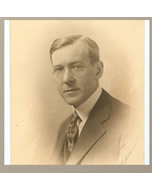 Emil Goetsch Dr. Goetsch was born in Iowa, attended the University of Chicago, and earned his MD degree at Johns Hopkins University School of Medicine in 1909. He did a surgical residency under the direction of Dr. William Halstead, and also did additional training at the Peter Bent Brigham Hospital in Boston under Dr. Harvey Cushing. He returned to Johns Hopkins and became an Associate Professor of Surgery in 1918. He then moved to New York to become a Professor of Surgery at Long Island College of Medicine in Brooklyn, which later merged with the State University of New York Downstate School of Medicine. He had a long-standing interest in thyroid surgery, and published numerous papers on thyroid disease. He was one of the first to describe the relationship of autonomous thyroid nodules as a cause of hyperthyroidism in 1918, and in a 1987 review article, the author suggested that thyrotoxicosis due to functioning thyroid nodules be called “Goetsch’s disease”.
Emil Goetsch Dr. Goetsch was born in Iowa, attended the University of Chicago, and earned his MD degree at Johns Hopkins University School of Medicine in 1909. He did a surgical residency under the direction of Dr. William Halstead, and also did additional training at the Peter Bent Brigham Hospital in Boston under Dr. Harvey Cushing. He returned to Johns Hopkins and became an Associate Professor of Surgery in 1918. He then moved to New York to become a Professor of Surgery at Long Island College of Medicine in Brooklyn, which later merged with the State University of New York Downstate School of Medicine. He had a long-standing interest in thyroid surgery, and published numerous papers on thyroid disease. He was one of the first to describe the relationship of autonomous thyroid nodules as a cause of hyperthyroidism in 1918, and in a 1987 review article, the author suggested that thyrotoxicosis due to functioning thyroid nodules be called “Goetsch’s disease”.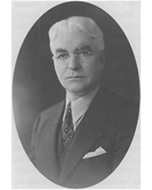 Gordon S. Fahrni Dr. Fahrni was born in near Winnipeg Manitoba, Canada and attended Wesley College in Winnipeg before entering medical school at the University of Manitoba. After his surgical residency at Winnipeg General Hospital, he served with the Canadian Army Medical Corps. He returned to Winnipeg after the war, opened a surgical practice there, and taught at the University of Manitoba. Dr. Fahrni was acknowledged as a North American expert on goiter surgery and as a pioneer in the use of local anesthetic in thyroid surgery. He published many papers on thyroid disease and thyroid surgery. He was a founding member of the American Association for the Study of Goiter. In 1941, Dr. Fahrni became the President of the Canadian Medical Association. He published an autobiography, Prairie Surgeon, in 1947.
Gordon S. Fahrni Dr. Fahrni was born in near Winnipeg Manitoba, Canada and attended Wesley College in Winnipeg before entering medical school at the University of Manitoba. After his surgical residency at Winnipeg General Hospital, he served with the Canadian Army Medical Corps. He returned to Winnipeg after the war, opened a surgical practice there, and taught at the University of Manitoba. Dr. Fahrni was acknowledged as a North American expert on goiter surgery and as a pioneer in the use of local anesthetic in thyroid surgery. He published many papers on thyroid disease and thyroid surgery. He was a founding member of the American Association for the Study of Goiter. In 1941, Dr. Fahrni became the President of the Canadian Medical Association. He published an autobiography, Prairie Surgeon, in 1947.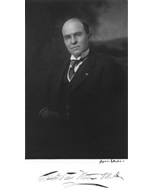 Seymour D. Van Meter Dr. Van Meter was from Texas and attended the University of Pennsylvania School of Medicine, graduating in 1889. After residency training in Philadelphia, Dr. Van Meter established a surgical practice in Denver, Colorado in the early 1890’s. His daughter, Virginia Van Meter, was the first female surgeon in Colorado. Both he and Virginia Van Meter were founding members of the American Association for the Study of Goiter (AASG). He chaired an AASG committee on Goiter Classification and Nomenclature, publishing an influential report in 1929. According to this schema, goiters were stated to be either diffuse or nodular and, within those categories, nontoxic or toxic. In 1930, and annually for several more years, he donated funds to support an award for the best essay on the subject of “Goiter—Especially Its Basic Cause”, which has evolved into the current Van Meter Prize, one of the ATA’s most prestigious honors.
Seymour D. Van Meter Dr. Van Meter was from Texas and attended the University of Pennsylvania School of Medicine, graduating in 1889. After residency training in Philadelphia, Dr. Van Meter established a surgical practice in Denver, Colorado in the early 1890’s. His daughter, Virginia Van Meter, was the first female surgeon in Colorado. Both he and Virginia Van Meter were founding members of the American Association for the Study of Goiter (AASG). He chaired an AASG committee on Goiter Classification and Nomenclature, publishing an influential report in 1929. According to this schema, goiters were stated to be either diffuse or nodular and, within those categories, nontoxic or toxic. In 1930, and annually for several more years, he donated funds to support an award for the best essay on the subject of “Goiter—Especially Its Basic Cause”, which has evolved into the current Van Meter Prize, one of the ATA’s most prestigious honors.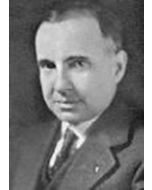 Elmer Raymond Arn Dr. Arn was born in Ohio and attended Miami University of Ohio before earning his medical degree at the University of Cincinnati medical school in 1911. He did a surgical residency at Miami Valley Hospital in Dayton, Ohio, and also studied surgery in Germany and Switzerland. Dr. Arn was one of the founders of the American Association for the Study of Goiter. He was a member of the board of governors of the American College of Surgeons, and was known as the “Dean of Dayton surgeons” at the time of his death.
Elmer Raymond Arn Dr. Arn was born in Ohio and attended Miami University of Ohio before earning his medical degree at the University of Cincinnati medical school in 1911. He did a surgical residency at Miami Valley Hospital in Dayton, Ohio, and also studied surgery in Germany and Switzerland. Dr. Arn was one of the founders of the American Association for the Study of Goiter. He was a member of the board of governors of the American College of Surgeons, and was known as the “Dean of Dayton surgeons” at the time of his death.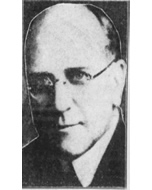 Kerwin Weidman Kinard Dr. Kinard was born in Philadelphia and graduated from the University of Pennsylvania School of Medicine in 1908. He did his residency at Lankenau Hospital in Philadelphia, he had additional surgical training at the University of Berlin. After serving in the U.S. Army Medical Corps in World War I, he established a surgical practice in Kansas City, Missouri, where he became a renowned thyroid surgeon. He subsequently returned to Philadelphia, and at the time of his death was the Director of Tuberculosis Control for the Pennsylvania Department of Health.
Kerwin Weidman Kinard Dr. Kinard was born in Philadelphia and graduated from the University of Pennsylvania School of Medicine in 1908. He did his residency at Lankenau Hospital in Philadelphia, he had additional surgical training at the University of Berlin. After serving in the U.S. Army Medical Corps in World War I, he established a surgical practice in Kansas City, Missouri, where he became a renowned thyroid surgeon. He subsequently returned to Philadelphia, and at the time of his death was the Director of Tuberculosis Control for the Pennsylvania Department of Health.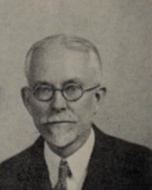 Marcus O. Shivers, PhD., MD Dr. Shivers was a native of Mississippi. He earned his MD degree in 1900 at the University of the South in Sewanee, Tennessee. He had additional surgical training at the New York Polyclinic School and Europe, and was a surgical resident at the Charity Hospital in Vicksburg, MS. He subsequently established a surgical practice in Colorado Springs, Colorado, specializing in thyroid surgery, and became a Professor of Surgery at St. Francis Hospital Training School in that city. He was a representative to the 1927 International Goiter Conference in Berne, Switzerland.
Marcus O. Shivers, PhD., MD Dr. Shivers was a native of Mississippi. He earned his MD degree in 1900 at the University of the South in Sewanee, Tennessee. He had additional surgical training at the New York Polyclinic School and Europe, and was a surgical resident at the Charity Hospital in Vicksburg, MS. He subsequently established a surgical practice in Colorado Springs, Colorado, specializing in thyroid surgery, and became a Professor of Surgery at St. Francis Hospital Training School in that city. He was a representative to the 1927 International Goiter Conference in Berne, Switzerland.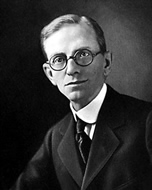 Henry Stanley Plummer Dr. Plummer graduated from Northwestern University Medical School in 1898, and returned home to Minnesota to practice medicine with his father. He was recruited to join the relatively new Mayo Clinic in 1901. He became an authority on thyroid disease, but was also known for organizing patient care at the Mayo Clinic: he created the first example of the modern patient medical record giving each patient a unique ID. He invented the pneumatic tube system to transfer medical records from the central storage area to a specific office. He also pioneered the model of the integrated multi specialty group practice at the Mayo Clinic, now used throughout the world.
Henry Stanley Plummer Dr. Plummer graduated from Northwestern University Medical School in 1898, and returned home to Minnesota to practice medicine with his father. He was recruited to join the relatively new Mayo Clinic in 1901. He became an authority on thyroid disease, but was also known for organizing patient care at the Mayo Clinic: he created the first example of the modern patient medical record giving each patient a unique ID. He invented the pneumatic tube system to transfer medical records from the central storage area to a specific office. He also pioneered the model of the integrated multi specialty group practice at the Mayo Clinic, now used throughout the world. Robert Mayburn Howard Dr. Howard grew up in Oklahoma, and graduated from the University of Michigan Medical School in 1901. He returned to Oklahoma, and became Professor of Surgery at the University of Oklahoma Medical School from 1934 to 1946. He was Chief of Staff of St. Anthony’s Hospital in Oklahoma City, and was a Governor of the American College of Surgeons from 1939 to 1947.
Robert Mayburn Howard Dr. Howard grew up in Oklahoma, and graduated from the University of Michigan Medical School in 1901. He returned to Oklahoma, and became Professor of Surgery at the University of Oklahoma Medical School from 1934 to 1946. He was Chief of Staff of St. Anthony’s Hospital in Oklahoma City, and was a Governor of the American College of Surgeons from 1939 to 1947. Allen Graham Dr. Graham graduated from the University of Florida in 1906 and from the University of Maryland School of Medicine in 1910. He served as a Captain in the U.S. Army Medical Corps during World War I. He established a surgical practice in Cleveland, Ohio and was an Associate Professor of Surgery at Western Reserve University. During that time period he worked with Dr. David Marine on the legendary trials of goiter prevention in the Akron, Ohio public Schools. From 1928 to 1943 he was the Chief of Pathology at the Cleveland Clinic. During those years he co-authored many papers on thyroid disease with Dr. George Crile. In 1944, he moved to Pittsburgh, PA. and became the Chief of Pathology at Western Pennsylvania Hospital until his retirement in 1952.
Allen Graham Dr. Graham graduated from the University of Florida in 1906 and from the University of Maryland School of Medicine in 1910. He served as a Captain in the U.S. Army Medical Corps during World War I. He established a surgical practice in Cleveland, Ohio and was an Associate Professor of Surgery at Western Reserve University. During that time period he worked with Dr. David Marine on the legendary trials of goiter prevention in the Akron, Ohio public Schools. From 1928 to 1943 he was the Chief of Pathology at the Cleveland Clinic. During those years he co-authored many papers on thyroid disease with Dr. George Crile. In 1944, he moved to Pittsburgh, PA. and became the Chief of Pathology at Western Pennsylvania Hospital until his retirement in 1952.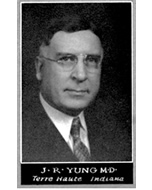 Julius Rudolph Yung Dr. Yung was born in Terre Haute, Indiana and graduated from the University of Illinois College of Medicine in 1900. He completed a surgical residency at the New York Postgraduate Medical School and Hospital, and was a Captain in the Army Medical Corps in World War I. He had additional training at several surgical clinics in Europe, including the de Quervain clinic in Berne, Switzerland. He practiced surgery for over 50 years at the Rose Dispensary in Terre Haute, Indiana, specializing in thyroid surgery.
Julius Rudolph Yung Dr. Yung was born in Terre Haute, Indiana and graduated from the University of Illinois College of Medicine in 1900. He completed a surgical residency at the New York Postgraduate Medical School and Hospital, and was a Captain in the Army Medical Corps in World War I. He had additional training at several surgical clinics in Europe, including the de Quervain clinic in Berne, Switzerland. He practiced surgery for over 50 years at the Rose Dispensary in Terre Haute, Indiana, specializing in thyroid surgery.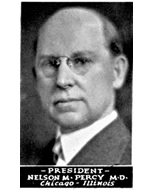 Nelson Mortimer Percy Dr. Percy was born in Iowa and graduated from Rush Medical College in 1899. He did n residency at Augustana Hospital in Chicago under Dr. Albert Ochsner, and was the surgical director of a U.S. Army base hospital in France during World War I. He became the Chief of Surgery at Augustana Hospital in 1925 and wrote two surgical textbooks with Ochsner. He was renowned for his expertise in thyroid surgery, and also for perfecting the Percy method of whole blood transfusion, consisting of running a tube directly from the donor’s vein to the recipient, and used by Chicago hospitals before World War II.
Nelson Mortimer Percy Dr. Percy was born in Iowa and graduated from Rush Medical College in 1899. He did n residency at Augustana Hospital in Chicago under Dr. Albert Ochsner, and was the surgical director of a U.S. Army base hospital in France during World War I. He became the Chief of Surgery at Augustana Hospital in 1925 and wrote two surgical textbooks with Ochsner. He was renowned for his expertise in thyroid surgery, and also for perfecting the Percy method of whole blood transfusion, consisting of running a tube directly from the donor’s vein to the recipient, and used by Chicago hospitals before World War II.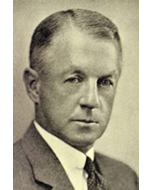 Frank Howard Lahey Dr. Lahey grew up in Haverhill, Massachusetts and graduated from Harvard Medical School in 1904 and served as a surgical resident at Long Island Hospital in New York. He was a staff surgeon at Boston City Hospital and on the surgical faculty of Harvard and Tufts medical schools. After serving in the Army Medical Corps in World War I, he opened a practice in Boston that became the Lahey Clinic. He pioneered “two-stage surgery”, in which surgery was completed in two steps over a period of two to four days. This greatly improved surgical outcomes with a decrease in the mortality rate following thyroid surgery from 1-in-5 to 1-in-140.
Frank Howard Lahey Dr. Lahey grew up in Haverhill, Massachusetts and graduated from Harvard Medical School in 1904 and served as a surgical resident at Long Island Hospital in New York. He was a staff surgeon at Boston City Hospital and on the surgical faculty of Harvard and Tufts medical schools. After serving in the Army Medical Corps in World War I, he opened a practice in Boston that became the Lahey Clinic. He pioneered “two-stage surgery”, in which surgery was completed in two steps over a period of two to four days. This greatly improved surgical outcomes with a decrease in the mortality rate following thyroid surgery from 1-in-5 to 1-in-140.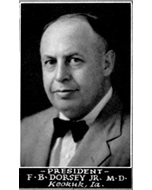 Frank Blinn Dorsey, Jr. Dr. Dorsey was born in Missouri. He entered Harvard Medical School in 1910, and graduated from the University of Iowa Medical School in 1912. He practiced surgery with his father for many years in Keokuk, Iowa, and had a particular interest in goiter surgery. He was a founder of Graham Hospital in Keokuk, Iowa, and taught surgery at the Keokuk College of Medicine, founded by his father, Frank Blinn Dorsey, Sr., which later became the State University of Iowa College of Medicine.
Frank Blinn Dorsey, Jr. Dr. Dorsey was born in Missouri. He entered Harvard Medical School in 1910, and graduated from the University of Iowa Medical School in 1912. He practiced surgery with his father for many years in Keokuk, Iowa, and had a particular interest in goiter surgery. He was a founder of Graham Hospital in Keokuk, Iowa, and taught surgery at the Keokuk College of Medicine, founded by his father, Frank Blinn Dorsey, Sr., which later became the State University of Iowa College of Medicine.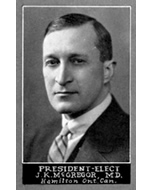 James Kenneth McGregor Dr. McGregor was born and raised in Watertown, Ontario and graduated from the University of Toronto School of Medicine in 1905. His surgical training included residencies in London and at the Mayo Clinic. He founded the McGregor Clinic in Hamilton, Ontario and was the Chief of Surgery at Hamilton General Hospital. He devoted career to solving problems related to thyroid surgery.
James Kenneth McGregor Dr. McGregor was born and raised in Watertown, Ontario and graduated from the University of Toronto School of Medicine in 1905. His surgical training included residencies in London and at the Mayo Clinic. He founded the McGregor Clinic in Hamilton, Ontario and was the Chief of Surgery at Hamilton General Hospital. He devoted career to solving problems related to thyroid surgery.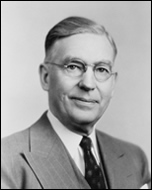 John de Jarnette Pemberton Dr. Pemberton grew up in North Carolina, and graduated from the University of North Carolina in 1907. He graduated from the Pennsylvania School of Medicine in 1911, did a surgical residency at the Mayo Clinic starting in 1913, and received additional surgical training at the University of Minnesota, from which he received a Masters Degree in Surgery in 1918. He was Chief of the Surgical Section at the Mayo Clinic from 1918, where he was a pioneer in thyroid surgery, until his retirement in 1952.
John de Jarnette Pemberton Dr. Pemberton grew up in North Carolina, and graduated from the University of North Carolina in 1907. He graduated from the Pennsylvania School of Medicine in 1911, did a surgical residency at the Mayo Clinic starting in 1913, and received additional surgical training at the University of Minnesota, from which he received a Masters Degree in Surgery in 1918. He was Chief of the Surgical Section at the Mayo Clinic from 1918, where he was a pioneer in thyroid surgery, until his retirement in 1952.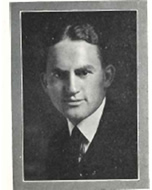 William Blair Mosser Dr. Mosser graduated from the University of Pennsylvania School of Medicine in 1922. He did a surgical residency at University of Pennsylvania Hospital. He became a faculty member there, where he specialized in thyroid surgery and was the surgeon to the goiter clinic at University Hospital. In 1928, he moved to Kane, PA where he became the Surgeon-in-Chief at Kane Community Hospital.
William Blair Mosser Dr. Mosser graduated from the University of Pennsylvania School of Medicine in 1922. He did a surgical residency at University of Pennsylvania Hospital. He became a faculty member there, where he specialized in thyroid surgery and was the surgeon to the goiter clinic at University Hospital. In 1928, he moved to Kane, PA where he became the Surgeon-in-Chief at Kane Community Hospital.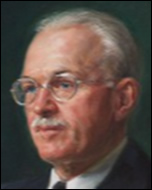 James Howard Means Dr. Means graduated from Harvard Medical School in 1911. He established the first thyroid clinic in Boston in 1920 at the Massachusetts General Hospital and helped introduce radioactive iodine as a tool in the diagnosis and treatment of thyroid disorders in 1941. He was Jackson Professor of Clinical Medicine at Harvard from 1932 to 1951, acting dean of the Faculty of Medicine in 1946, and chief of medical services at Massachusetts General Hospital from 1924 to 1951.
James Howard Means Dr. Means graduated from Harvard Medical School in 1911. He established the first thyroid clinic in Boston in 1920 at the Massachusetts General Hospital and helped introduce radioactive iodine as a tool in the diagnosis and treatment of thyroid disorders in 1941. He was Jackson Professor of Clinical Medicine at Harvard from 1932 to 1951, acting dean of the Faculty of Medicine in 1946, and chief of medical services at Massachusetts General Hospital from 1924 to 1951. Arnold Stevans Jackson Dr. Jackson graduated from the University of Wisconsin in 1916 and was a graduate of Columbia University Medical School. He then did residency training at the Mayo Clinic. He was the Director of the Jackson Clinic in Madison, Wisconsin and expert on thyroid disease. He was the author of “Goiter and Other Diseases of the Thyroid”. Was a world traveler and wrote many articles on his experiences. Was a member of the American Medical Writers Association and was the President of the U.S. Chapter of the International College of Surgeons.
Arnold Stevans Jackson Dr. Jackson graduated from the University of Wisconsin in 1916 and was a graduate of Columbia University Medical School. He then did residency training at the Mayo Clinic. He was the Director of the Jackson Clinic in Madison, Wisconsin and expert on thyroid disease. He was the author of “Goiter and Other Diseases of the Thyroid”. Was a world traveler and wrote many articles on his experiences. Was a member of the American Medical Writers Association and was the President of the U.S. Chapter of the International College of Surgeons.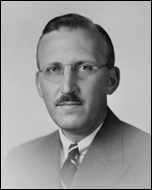 Samuel F. Haines Dr. Haines grew up in Rochester, MN and the family became good friends with the Mayo family; Dr. W.W. Mayo, became Samuel’s godfather. A visit to the family’s home by Dr. Charles Mayo to care for a feverish 3-year-old Samuel inspired him to become a doctor. He graduated from Harvard Medical School in 1919, and did a residency at the Massachusetts General Hospital. He returned to work at the Mayo Clinic in 1924, where he and Dr. Henry Plummer worked together treating patients with thyroid disease and other endocrine disorders. He was Chairman of the Mayo Board of Governors for 8 years before retiring in 1957.
Samuel F. Haines Dr. Haines grew up in Rochester, MN and the family became good friends with the Mayo family; Dr. W.W. Mayo, became Samuel’s godfather. A visit to the family’s home by Dr. Charles Mayo to care for a feverish 3-year-old Samuel inspired him to become a doctor. He graduated from Harvard Medical School in 1919, and did a residency at the Massachusetts General Hospital. He returned to work at the Mayo Clinic in 1924, where he and Dr. Henry Plummer worked together treating patients with thyroid disease and other endocrine disorders. He was Chairman of the Mayo Board of Governors for 8 years before retiring in 1957.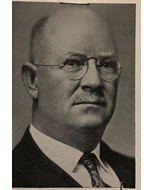 Thomas Callahan Davison Dr. Davison was born in Woodville in Greene County, Georgia.
Thomas Callahan Davison Dr. Davison was born in Woodville in Greene County, Georgia.  Willard O. Thompson Dr. Thompson was born in New Brunswick, Canada. He received a BA from Dalhousie University in Halifax, Nova Scotia and his MD from Harvard Medical school. He was a fellow of the National Research Council and held research fellowships at Harvard Medical School and the Massachusetts General Hospital under Dr J.H. Means.
Willard O. Thompson Dr. Thompson was born in New Brunswick, Canada. He received a BA from Dalhousie University in Halifax, Nova Scotia and his MD from Harvard Medical school. He was a fellow of the National Research Council and held research fellowships at Harvard Medical School and the Massachusetts General Hospital under Dr J.H. Means.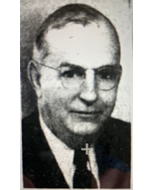 Claude J. Hunt Dr. Claude Hunt was born in Warren County, Kentucky. He graduated from Bethel College, Russellville KY in 1910 and received his medical degree from the University of Kansas in 1915. He interned at Kansas City General Hospital until 1916 and then served in WW1 as a captain in the Medical Corps. Dr Hunt did postgraduate work at Washington University in 1918, the University of Montpelier in France in 1919, Harvard University in1921 and the University of Vienna in 1929. He was a former chief of surgical service at Kansas City General Hospital and an associate in surgery at the University of Kansas Medical Center. He was also on the staff of the Menorah Medical Center and St Mary’s Hospital. He retired in 1963.
Claude J. Hunt Dr. Claude Hunt was born in Warren County, Kentucky. He graduated from Bethel College, Russellville KY in 1910 and received his medical degree from the University of Kansas in 1915. He interned at Kansas City General Hospital until 1916 and then served in WW1 as a captain in the Medical Corps. Dr Hunt did postgraduate work at Washington University in 1918, the University of Montpelier in France in 1919, Harvard University in1921 and the University of Vienna in 1929. He was a former chief of surgical service at Kansas City General Hospital and an associate in surgery at the University of Kansas Medical Center. He was also on the staff of the Menorah Medical Center and St Mary’s Hospital. He retired in 1963.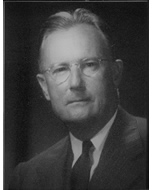 Merrill N. Foote Dr. Merrill Foote was born in 1889 in New York and obtained his MD from Columbia University College of Physician and Surgeons. He worked for many years in Brooklyn and Long Island and was a former regent of the American College of Surgeons. During World War I, he served as captain with the US Medical Corps. He received the Distinguished Service award from the American Thyroid Association in 1957. He published papers on several topics including thyroid surgery, thyroid cancer and treatment of hyperthyroidism with thiouracil. At the time of his death, he was Director Emeritus of the Department of Surgery, St. John’s Episcopal Hospital in Brooklyn.
Merrill N. Foote Dr. Merrill Foote was born in 1889 in New York and obtained his MD from Columbia University College of Physician and Surgeons. He worked for many years in Brooklyn and Long Island and was a former regent of the American College of Surgeons. During World War I, he served as captain with the US Medical Corps. He received the Distinguished Service award from the American Thyroid Association in 1957. He published papers on several topics including thyroid surgery, thyroid cancer and treatment of hyperthyroidism with thiouracil. At the time of his death, he was Director Emeritus of the Department of Surgery, St. John’s Episcopal Hospital in Brooklyn.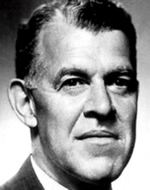 Richard B. Cattell Dr. Cattell was born in Martins Ferry, Ohio, obtained an AB degree from Mount Union College in Ohio, and his MD from Harvard Medical school. His graduate training was at St Luke’s Hospital in New York and at the Lahey Clinic. He joined the clinic’s staff in 1927 and became its director on the death of Dr. Frank Lahey, the founder, in 1953. He retired as director in 1962 because of illness.
Richard B. Cattell Dr. Cattell was born in Martins Ferry, Ohio, obtained an AB degree from Mount Union College in Ohio, and his MD from Harvard Medical school. His graduate training was at St Luke’s Hospital in New York and at the Lahey Clinic. He joined the clinic’s staff in 1927 and became its director on the death of Dr. Frank Lahey, the founder, in 1953. He retired as director in 1962 because of illness.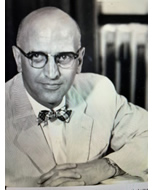 Rulon W. Rawson After obtaining his MD, Dr. Rawson was a research fellow at Harvard Medical School and a staff physician at Massachusetts General Hospital. He later became a professor of medicine at Cornell University Medical College and chairman of the Department of Medicine at Memorial Sloan-Kettering Institute. He was also the dean at New Jersey College of Medicine and Dentistry, a professor of medicine and vice president for Education and Program Development at the University of Texas M.D. Anderson Hospital and Tumor Institute. Finally, Dr. Rawson became the director of the Bonneville Center for Research in Cancer Cause and Prevention in Salt Lake City. In addition to the ATA, he was also a member of numerous national committees and societies, including the Atomic Energy Commission, the American Cancer Society and the the Advisory Council on Health Manpower.
Rulon W. Rawson After obtaining his MD, Dr. Rawson was a research fellow at Harvard Medical School and a staff physician at Massachusetts General Hospital. He later became a professor of medicine at Cornell University Medical College and chairman of the Department of Medicine at Memorial Sloan-Kettering Institute. He was also the dean at New Jersey College of Medicine and Dentistry, a professor of medicine and vice president for Education and Program Development at the University of Texas M.D. Anderson Hospital and Tumor Institute. Finally, Dr. Rawson became the director of the Bonneville Center for Research in Cancer Cause and Prevention in Salt Lake City. In addition to the ATA, he was also a member of numerous national committees and societies, including the Atomic Energy Commission, the American Cancer Society and the the Advisory Council on Health Manpower.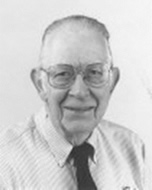 Brown M. Dobyns Dr. Brown Dobyns was born in Jacksonville, IL in 1913. He received his BA from Illinois College, his MD from Johns Hopkins University and his PH.D from University of Minnesota. He did his fellowships in surgery (GI, Thyroid) at the Mayo Clinic and the Massachusetts General Hospital. He was a surgeon, a scientific researcher, a humanitarian and a much-respected teacher. He worked at MetroHealth Medical Center (formerly Cleveland Metropolitan General Hospital) where he served as assistant chief of surgical services from 1951 to 1967 and associate director of surgery beginning in 1967. He retired in 1988 and became Professor Emeritus of Surgery at Case Western Reserve University School of Medicine.
Brown M. Dobyns Dr. Brown Dobyns was born in Jacksonville, IL in 1913. He received his BA from Illinois College, his MD from Johns Hopkins University and his PH.D from University of Minnesota. He did his fellowships in surgery (GI, Thyroid) at the Mayo Clinic and the Massachusetts General Hospital. He was a surgeon, a scientific researcher, a humanitarian and a much-respected teacher. He worked at MetroHealth Medical Center (formerly Cleveland Metropolitan General Hospital) where he served as assistant chief of surgical services from 1951 to 1967 and associate director of surgery beginning in 1967. He retired in 1988 and became Professor Emeritus of Surgery at Case Western Reserve University School of Medicine.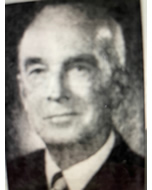 Elmer C. Bartels Dr. Bartels was born in Hamilton, Ohio, circa 1902. He graduated from the University of Illinois in 1923 and obtained his MD from its Medical School in 1927. He served his internship at Western Penn Hospital and his residency in the Mayo clinic. From 1935 to 1968 he served in the Lahey Clinic as a thyroid specialist and then went into private practice. He was a past president of New England Baptist Hospital and Lahey Clinic staff. He published at least 82 articles, many dealing with the chemical control of thyroid disease, with a focus on antithyroid drugs. Dr. Bartels was 81 when he died.
Elmer C. Bartels Dr. Bartels was born in Hamilton, Ohio, circa 1902. He graduated from the University of Illinois in 1923 and obtained his MD from its Medical School in 1927. He served his internship at Western Penn Hospital and his residency in the Mayo clinic. From 1935 to 1968 he served in the Lahey Clinic as a thyroid specialist and then went into private practice. He was a past president of New England Baptist Hospital and Lahey Clinic staff. He published at least 82 articles, many dealing with the chemical control of thyroid disease, with a focus on antithyroid drugs. Dr. Bartels was 81 when he died. Warren H. Cole Dr. Warren Henry Cole was born in Clay Center, Kansas, in 1898. He obtained a BSc from the University of Kansas and an MD from the Washington University School of Medicine, St Louis, MI. He interned at the City Hospital in Baltimore and then spent five years as a resident at Barnes Hospital, St Louis. He then returned to Washington University School of Medicine as instructor and then Associate Professor of Surgery. In 1936 he was appointed Professor of Surgery at the University of Illinois College of Medicine, where he remained for thirty years until his retirement in 1966. He was recognized internationally as a very able surgeon who advanced the frontiers of surgery. He had a particular interest in hepato-biliary surgery and the treatment of tumors of the thyroid gland. In addition to being the co-author of three surgical textbooks, he contributed over three hundred articles to surgical journals.
Warren H. Cole Dr. Warren Henry Cole was born in Clay Center, Kansas, in 1898. He obtained a BSc from the University of Kansas and an MD from the Washington University School of Medicine, St Louis, MI. He interned at the City Hospital in Baltimore and then spent five years as a resident at Barnes Hospital, St Louis. He then returned to Washington University School of Medicine as instructor and then Associate Professor of Surgery. In 1936 he was appointed Professor of Surgery at the University of Illinois College of Medicine, where he remained for thirty years until his retirement in 1966. He was recognized internationally as a very able surgeon who advanced the frontiers of surgery. He had a particular interest in hepato-biliary surgery and the treatment of tumors of the thyroid gland. In addition to being the co-author of three surgical textbooks, he contributed over three hundred articles to surgical journals.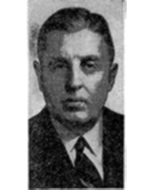 Edwin G. Ramsdell
Edwin G. Ramsdell 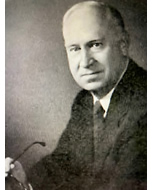 Howard R. Mahorner Dr. Mahorner was born in Mobile, Alabama in 1903. He obtained a BA from Spring Hill College in Mobile, and a M.D. in 1925 from the University of Pennsylvania. After an internship at Mercy Hospital in Pittsburg he entered the Mayo Foundation as a fellow in Medicine in 1926 and transferred to surgery in 1928. He received an M.S. in surgery from the University of Minnesota in 1929. He left the Mayo Foundation in 1930. He practiced surgery in Aberdeen, SD and then moved to New Orleans, where he became an instructor of surgery at Tulane University School of Medicine and eventually a Clinical Professor of Surgery at Louisiana State University School of Medicine, and Director of the Mahorner Clinic in New Orleans.
Howard R. Mahorner Dr. Mahorner was born in Mobile, Alabama in 1903. He obtained a BA from Spring Hill College in Mobile, and a M.D. in 1925 from the University of Pennsylvania. After an internship at Mercy Hospital in Pittsburg he entered the Mayo Foundation as a fellow in Medicine in 1926 and transferred to surgery in 1928. He received an M.S. in surgery from the University of Minnesota in 1929. He left the Mayo Foundation in 1930. He practiced surgery in Aberdeen, SD and then moved to New Orleans, where he became an instructor of surgery at Tulane University School of Medicine and eventually a Clinical Professor of Surgery at Louisiana State University School of Medicine, and Director of the Mahorner Clinic in New Orleans. Alexander Albert Dr. Alexander Albert was born in Spring Valley, NY in 1911. He received a bachelor’s degree from Columbia University, and an M.A., PH.D and M.D. from Harvard. After his internship and residency at the Beth Israel Hospital, he became a research fellow at the Massachusetts General hospital and later a staff physician in its thyroid clinic. In 1946 he joined the Mayo Clinic as a research associate in thyroid physiology and became head of the Endocrine laboratory in 1947. He was appointed a full Professor in 1955 and Chairman of the Department of Endocrine research in 1967. In 1972 he was named senior consultant in the Department of Molecular Medicine.
Alexander Albert Dr. Alexander Albert was born in Spring Valley, NY in 1911. He received a bachelor’s degree from Columbia University, and an M.A., PH.D and M.D. from Harvard. After his internship and residency at the Beth Israel Hospital, he became a research fellow at the Massachusetts General hospital and later a staff physician in its thyroid clinic. In 1946 he joined the Mayo Clinic as a research associate in thyroid physiology and became head of the Endocrine laboratory in 1947. He was appointed a full Professor in 1955 and Chairman of the Department of Endocrine research in 1967. In 1972 he was named senior consultant in the Department of Molecular Medicine.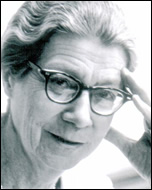 Virginia Kneeland Frantz Dr. Kneeland Franz the ATA’s first woman president. She was born in New York City in 1896. She graduated first in her class at Bryn Mawr College, and then, because of the Dr.op in male applicants to the all-male College of Physicians and Surgeons of Columbia University during WW1, she became one of the five women admitted and she obtained her M.D. in 1922, ranking second in her class. She then became the first woman ever appointed to a surgical internship at the affiliated Presbyterian Hospital. From 1924-27 she served as assistant surgeon to the outpatient department. After that she joined the surgical pathology laboratory at Presbyterian. During the following years Dr. Franz contributed a series of important pathological studies related to tumors of the thyroid, pancreas and breast. She collaborated with renowned surgeon Allen Whipple in describing insulin-secreting tumors of the pancreas and she was among the first researchers to demonstrate the effectiveness of radioactive iodine for identifying and treating metastatic thyroid carcinoma. She was also highly committed to teaching; from 1924 until her retirement in1962 she taught surgery to medical students at the College of Physicians and Surgeons, becoming a full Professor in 1951.
Virginia Kneeland Frantz Dr. Kneeland Franz the ATA’s first woman president. She was born in New York City in 1896. She graduated first in her class at Bryn Mawr College, and then, because of the Dr.op in male applicants to the all-male College of Physicians and Surgeons of Columbia University during WW1, she became one of the five women admitted and she obtained her M.D. in 1922, ranking second in her class. She then became the first woman ever appointed to a surgical internship at the affiliated Presbyterian Hospital. From 1924-27 she served as assistant surgeon to the outpatient department. After that she joined the surgical pathology laboratory at Presbyterian. During the following years Dr. Franz contributed a series of important pathological studies related to tumors of the thyroid, pancreas and breast. She collaborated with renowned surgeon Allen Whipple in describing insulin-secreting tumors of the pancreas and she was among the first researchers to demonstrate the effectiveness of radioactive iodine for identifying and treating metastatic thyroid carcinoma. She was also highly committed to teaching; from 1924 until her retirement in1962 she taught surgery to medical students at the College of Physicians and Surgeons, becoming a full Professor in 1951.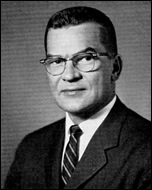 John C. McClintock Dr. McClintock was born in Iowa City, Iowa in 1906. He received a B.S. from the University of Iowa in 1927 and an M.D. from its School of Medicine in 1929. After an internship at the Montreal General Hospital, he completed a two-year fellowship in surgery at the Cleveland Clinic Foundation. He then served as a Clinical Assistant in Surgery at Northwestern University for two years. In 1934 he moved to Albany Medical College, as an Instructor in Surgery, where he first became interested in thyroid surgery. During WW11 he was assigned to the Third Auxillary Surgical Group, first as Captain and then Major. He was on active service in the Mediterranean and Europe for over three years, receiving several military awards. After the war he returned to Albany, devoting himself to thyroid surgery. He was an Assistant Attending Surgeon (1937-1956) and then Associate Clinical Professor of Surgery (1956-1969) at Albany Medical College. He was also Attending Surgeon (1956-1969) and Chairman of the Medical Staff at Albany Medical Center Hospital (1965).
John C. McClintock Dr. McClintock was born in Iowa City, Iowa in 1906. He received a B.S. from the University of Iowa in 1927 and an M.D. from its School of Medicine in 1929. After an internship at the Montreal General Hospital, he completed a two-year fellowship in surgery at the Cleveland Clinic Foundation. He then served as a Clinical Assistant in Surgery at Northwestern University for two years. In 1934 he moved to Albany Medical College, as an Instructor in Surgery, where he first became interested in thyroid surgery. During WW11 he was assigned to the Third Auxillary Surgical Group, first as Captain and then Major. He was on active service in the Mediterranean and Europe for over three years, receiving several military awards. After the war he returned to Albany, devoting himself to thyroid surgery. He was an Assistant Attending Surgeon (1937-1956) and then Associate Clinical Professor of Surgery (1956-1969) at Albany Medical College. He was also Attending Surgeon (1956-1969) and Chairman of the Medical Staff at Albany Medical Center Hospital (1965).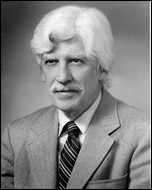 Joseph Edward Rall Dr. “Ed” Rall, founder of the thyroid group at the NIH, was born in Naperville, IL in 1920, graduated from North Central College in Naperville, and received his medical training at Northwestern University Medical School and Wesley Memorial Hospital in Chicago. His fellowship and residency at Mayo Clinic in Rochester, MN, began in 1945, was interrupted by 2-year military service in Germany at the end of World War II, and was completed in 1950. It was at Mayo that he began his career in thyroidology. In 1952 he received a Ph.D. from the University of Minnesota for his work on the metabolism of labeled thyroid hormone. In 1950 he joined Rulon Rawson at the Memorial Sloan Kettering Cancer Center in New York City, where he remained for the next 5 years. The group was engaged in the early development of treatment for metastatic thyroid cancer with radioactive iodine (I-131). In 1955 he moved to the NIH to establish and lead the Clinical Endocrinology Branch at NIDDK. In 1960 he was appointed Institute Scientific Director, a position he held for over 20 years, and in 1983 he became Deputy Director of Intramural Research for NIH. In 1991 he returned to the laboratory and in 1995 retired to Scientist Emeritus, still continuing research with a small group of international fellows.
Joseph Edward Rall Dr. “Ed” Rall, founder of the thyroid group at the NIH, was born in Naperville, IL in 1920, graduated from North Central College in Naperville, and received his medical training at Northwestern University Medical School and Wesley Memorial Hospital in Chicago. His fellowship and residency at Mayo Clinic in Rochester, MN, began in 1945, was interrupted by 2-year military service in Germany at the end of World War II, and was completed in 1950. It was at Mayo that he began his career in thyroidology. In 1952 he received a Ph.D. from the University of Minnesota for his work on the metabolism of labeled thyroid hormone. In 1950 he joined Rulon Rawson at the Memorial Sloan Kettering Cancer Center in New York City, where he remained for the next 5 years. The group was engaged in the early development of treatment for metastatic thyroid cancer with radioactive iodine (I-131). In 1955 he moved to the NIH to establish and lead the Clinical Endocrinology Branch at NIDDK. In 1960 he was appointed Institute Scientific Director, a position he held for over 20 years, and in 1983 he became Deputy Director of Intramural Research for NIH. In 1991 he returned to the laboratory and in 1995 retired to Scientist Emeritus, still continuing research with a small group of international fellows.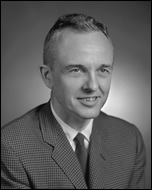 F.R. Keating, Jr Dr. Raymond Keating was born in Philadelphia in 1911 and received both his undergraduate and medical training at Cornell University, receiving his M.D. degree in 1936. After his internship at Philadelphia General Hospital, he enrolled as a fellow in Medicine in the Mayo Graduate School of Medicine. His work was of such high quality that in 1942 he was offered a position on the staff of the Mayo clinic in the endocrinology section. But first it was arranged for him to spend time at the MGH and MIT in Boston, chiefly with Dr.s. Howard Means, Fuller Albright, Saul Herz and Rulon Rawson, who were exploring the use of radioiodine in medical research and therapy. On his return to the Mayo Clinic, he started his own studies with radioiodine and published more than eighty scientific papers, many dealing with the use of radioactive iodine in the study of thyroid physiology and disease, and its use to treat the latter. He was appointed Professor of Medicine in the Mayo Graduate School of the University of Minnesota In1953. In 1965 he was appointed by the Surgeon General of the Public Health Service to a three-member panel to investigate the biological effects of residual atmospheric radiation produced by nuclear explosions.
F.R. Keating, Jr Dr. Raymond Keating was born in Philadelphia in 1911 and received both his undergraduate and medical training at Cornell University, receiving his M.D. degree in 1936. After his internship at Philadelphia General Hospital, he enrolled as a fellow in Medicine in the Mayo Graduate School of Medicine. His work was of such high quality that in 1942 he was offered a position on the staff of the Mayo clinic in the endocrinology section. But first it was arranged for him to spend time at the MGH and MIT in Boston, chiefly with Dr.s. Howard Means, Fuller Albright, Saul Herz and Rulon Rawson, who were exploring the use of radioiodine in medical research and therapy. On his return to the Mayo Clinic, he started his own studies with radioiodine and published more than eighty scientific papers, many dealing with the use of radioactive iodine in the study of thyroid physiology and disease, and its use to treat the latter. He was appointed Professor of Medicine in the Mayo Graduate School of the University of Minnesota In1953. In 1965 he was appointed by the Surgeon General of the Public Health Service to a three-member panel to investigate the biological effects of residual atmospheric radiation produced by nuclear explosions.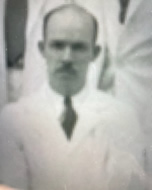 Lawrence W. Sloan
Lawrence W. Sloan 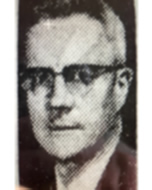 Gustavus. H. Klinck Dr. Gustavus Klinck was born in 1903 and received his M.D. from the Medical College of South Carolina. His specialty was pathology and he has twelve publications dealing primarily with the structural changes that occur in the thyroid in different diseased states.
Gustavus. H. Klinck Dr. Gustavus Klinck was born in 1903 and received his M.D. from the Medical College of South Carolina. His specialty was pathology and he has twelve publications dealing primarily with the structural changes that occur in the thyroid in different diseased states.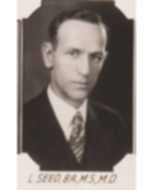 Lindon Seed Dr. Lindon Seed was born in 1897. He received his MD degree in 1930 from Rush Medical College in Chicago and practiced medicine in Oak Park Illinois. His primary and secondary specialties were General medicine and General Surgery, respectively. He was a member of the Chicago Medical Society, the National Society of Nuclear Medicine and the Central Surgical Society.
Lindon Seed Dr. Lindon Seed was born in 1897. He received his MD degree in 1930 from Rush Medical College in Chicago and practiced medicine in Oak Park Illinois. His primary and secondary specialties were General medicine and General Surgery, respectively. He was a member of the Chicago Medical Society, the National Society of Nuclear Medicine and the Central Surgical Society.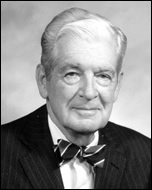 John B. Stanbury
John B. Stanbury 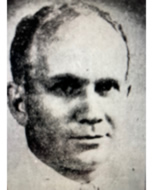 Theodore O .Winship Dr. Theodore Winship was born in Colorado in 1905. He received an A.B. from the University of Nebraska in 1932 and an M.D. from its medical school in 1937. He served in the US army in WW2 and was captured by the Japanese forces in the Battle pf Bataan and held prisoner for three years in the Philippines. Following his released he practiced medicine in Washington, D.C., where he was a pathologist at the Washington Hospital Center, ultimately becoming Chief of Pathology. He was a member of the American Medical Association, a diplomat of the American Board of Pathology and a fellow of the American College of Pathologists. He authored or co-authored thirty papers, many dealing with thyroid cancer, especially in children. He also published the results of studies in cultured thyroid cells. He retired to Atlanta Georgia in 1973 and died the following year. He was 68.
Theodore O .Winship Dr. Theodore Winship was born in Colorado in 1905. He received an A.B. from the University of Nebraska in 1932 and an M.D. from its medical school in 1937. He served in the US army in WW2 and was captured by the Japanese forces in the Battle pf Bataan and held prisoner for three years in the Philippines. Following his released he practiced medicine in Washington, D.C., where he was a pathologist at the Washington Hospital Center, ultimately becoming Chief of Pathology. He was a member of the American Medical Association, a diplomat of the American Board of Pathology and a fellow of the American College of Pathologists. He authored or co-authored thirty papers, many dealing with thyroid cancer, especially in children. He also published the results of studies in cultured thyroid cells. He retired to Atlanta Georgia in 1973 and died the following year. He was 68.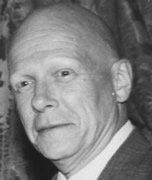 Samuel B. Barker
Samuel B. Barker 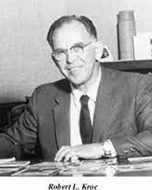 Robert L. Kroc Dr. Robert Kroc was born and raised in Chicago, He obtained B.A. and M.A. degrees from Oberlin College and a PhD in Zoology from the University of Wisconsin. From 1933-1944, Dr. Kroc was Instructor and then Assistant Professor of Zoology at Indiana University. In 1944 he began a career in biomedical research, joining the Maltine Company of Brooklyn, NY, which relocated to Morris Plains, NJ, and through various mergers, metamorphosed finally into the Warner-Lambert Pharmaceutical Company. Dr. Kroc had a remarkable record of achievement as Director of Physiology at the Warner Lambert Research Institute until he retired in 1969. He directed research that led to the development of Proloid® and Euthroid® for treatment of hypothyroidism, Simplastin® for measuring blood clotting time and Releasin® brand of relaxin for treatment of premature labor and threatened abortion. He co-authored eighteen scientific publications.
Robert L. Kroc Dr. Robert Kroc was born and raised in Chicago, He obtained B.A. and M.A. degrees from Oberlin College and a PhD in Zoology from the University of Wisconsin. From 1933-1944, Dr. Kroc was Instructor and then Assistant Professor of Zoology at Indiana University. In 1944 he began a career in biomedical research, joining the Maltine Company of Brooklyn, NY, which relocated to Morris Plains, NJ, and through various mergers, metamorphosed finally into the Warner-Lambert Pharmaceutical Company. Dr. Kroc had a remarkable record of achievement as Director of Physiology at the Warner Lambert Research Institute until he retired in 1969. He directed research that led to the development of Proloid® and Euthroid® for treatment of hypothyroidism, Simplastin® for measuring blood clotting time and Releasin® brand of relaxin for treatment of premature labor and threatened abortion. He co-authored eighteen scientific publications.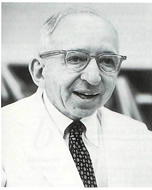 Sidney C. Werner Dr. Sidney Werner was born in 1909. Columbia University was his academic home. It was where he received his bachelor’s degree in 1929, his Master’s degree on 1932, his M.D. in 1937 and then fulfilled his internship and residency. He served as Clinical professor of Medicine and chief of the thyroid clinic from 1962 to 1977. In 1977 he retired to Arizona, where he worked as a visiting Professor of Medicine at the University of Arizona Medical Center. A founder and president of the ATA, Dr. Werner also founded the New York Thyroid Club. He authored or co-authored more than 55 papers and in 1955, the first edition of his highly acclaimed textbook “Thyroid: a Fundamental and Clinical Text” was published.
Sidney C. Werner Dr. Sidney Werner was born in 1909. Columbia University was his academic home. It was where he received his bachelor’s degree in 1929, his Master’s degree on 1932, his M.D. in 1937 and then fulfilled his internship and residency. He served as Clinical professor of Medicine and chief of the thyroid clinic from 1962 to 1977. In 1977 he retired to Arizona, where he worked as a visiting Professor of Medicine at the University of Arizona Medical Center. A founder and president of the ATA, Dr. Werner also founded the New York Thyroid Club. He authored or co-authored more than 55 papers and in 1955, the first edition of his highly acclaimed textbook “Thyroid: a Fundamental and Clinical Text” was published.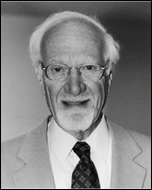 David H. Solomon Dr. David Solomon was born in 1923 in Brookline, MA. He graduated from Brown University in 1944 and entered Harvard Medical School that year. He obtained his M.D. in two years, graduating magna cum laude in 1946. He completed his internship and residency at the Peter Bent Brigham Hospital in Boston and fulfilled a two-year military commitment in the U.S. Public Health Service at the Gerontology Research Center in Baltimore, Md. Dr. Solomon was recruited to the new UCLA School of Medicine in 1952. He became the first board-certified endocrinologist in Los Angeles and led the development of the Division of Endocrinology in the new Department of Medicine at UCLA. In 1966, he was named Chief of Medicine at Harbor General Hospital. He returned to UCLA’s main campus in 1971 as executive chair of the Department of Medicine, holding that position until 1981, when he began a second career in Geriatrics and Gerontology.
David H. Solomon Dr. David Solomon was born in 1923 in Brookline, MA. He graduated from Brown University in 1944 and entered Harvard Medical School that year. He obtained his M.D. in two years, graduating magna cum laude in 1946. He completed his internship and residency at the Peter Bent Brigham Hospital in Boston and fulfilled a two-year military commitment in the U.S. Public Health Service at the Gerontology Research Center in Baltimore, Md. Dr. Solomon was recruited to the new UCLA School of Medicine in 1952. He became the first board-certified endocrinologist in Los Angeles and led the development of the Division of Endocrinology in the new Department of Medicine at UCLA. In 1966, he was named Chief of Medicine at Harbor General Hospital. He returned to UCLA’s main campus in 1971 as executive chair of the Department of Medicine, holding that position until 1981, when he began a second career in Geriatrics and Gerontology. Jacob Robbins Dr. Jacob Robbins was born in Yonkers, NY in 1922. He obtained his undergraduate degree from Cornell University in 1944 and then entered Cornell Medical College in NYC. His studies were interrupted when he joined the US army, and he received his M.D. in 1947. After an internship in medicine, in 1950 he joined the team of Dr. Rulon Rawson at Memorial Hospital and Sloan Kettering Cancer Center as a research fellow. In 1954 he joined the newly created NIH Clinical Center in Bethesda, MD. From 1963 to 1991 he was Chief of the Clinical Endocrinology Branch.
Jacob Robbins Dr. Jacob Robbins was born in Yonkers, NY in 1922. He obtained his undergraduate degree from Cornell University in 1944 and then entered Cornell Medical College in NYC. His studies were interrupted when he joined the US army, and he received his M.D. in 1947. After an internship in medicine, in 1950 he joined the team of Dr. Rulon Rawson at Memorial Hospital and Sloan Kettering Cancer Center as a research fellow. In 1954 he joined the newly created NIH Clinical Center in Bethesda, MD. From 1963 to 1991 he was Chief of the Clinical Endocrinology Branch.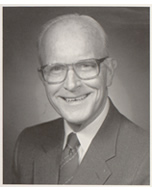 William M. McConahey Dr. McConahey was born in Pittsburg, PA in 1916, received a BA degree in 1938 from Washington and Jefferson College, and an MD in 1942 from Harvard Medical School. From 1943-45 he served in the US army. He was a Battalion surgeon in WWII and landed on Utah beach on D-Day +2. He spent the remainder of the war in this role across Europe and Germany and was the first medical officer inside the infamous Flossenburg concentration camp when it was liberated by the Allied army.
William M. McConahey Dr. McConahey was born in Pittsburg, PA in 1916, received a BA degree in 1938 from Washington and Jefferson College, and an MD in 1942 from Harvard Medical School. From 1943-45 he served in the US army. He was a Battalion surgeon in WWII and landed on Utah beach on D-Day +2. He spent the remainder of the war in this role across Europe and Germany and was the first medical officer inside the infamous Flossenburg concentration camp when it was liberated by the Allied army.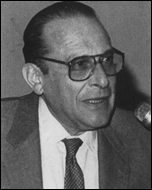 Sidney H. Ingbar Dr. Sidney Harold Ingbar was born in Denver, Colorado. He completed his endocrine fellowship at Harvard Medical Services and Thorndike Laboratory at the Boston City Hospital. He spent much of his career at Harvard Medical School where he served as Castle Professor and Director of the Thorndike Laboratory and Chief of Endocrinology at the Beth Israel Hospital.
Sidney H. Ingbar Dr. Sidney Harold Ingbar was born in Denver, Colorado. He completed his endocrine fellowship at Harvard Medical Services and Thorndike Laboratory at the Boston City Hospital. He spent much of his career at Harvard Medical School where he served as Castle Professor and Director of the Thorndike Laboratory and Chief of Endocrinology at the Beth Israel Hospital.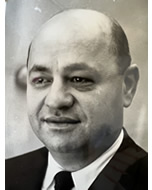 Farahe Maloof, M.D. Dr. Maloof was born in Boston, MA. He graduated from Harvard College in 1942 and from Tufts Medical School in 1945. He did his medical residency at Massachusetts General Hospital, where he also received his endocrinology training. He was Professor of Medicine at Harvard Medical School and Chief of the Thyroid Unit at the Massachusetts General Hospital from 1966-1980. Dr. Maloof was a pioneer in the use of radioiodine to treat metastatic thyroid cancer. He was one of the first investigators to report hyperthyroidism caused by a TSH secreting pituitary tumor, and his research on thyroid peroxidase helped to elucidate the mechanism of action of antithyroid drugs.
Farahe Maloof, M.D. Dr. Maloof was born in Boston, MA. He graduated from Harvard College in 1942 and from Tufts Medical School in 1945. He did his medical residency at Massachusetts General Hospital, where he also received his endocrinology training. He was Professor of Medicine at Harvard Medical School and Chief of the Thyroid Unit at the Massachusetts General Hospital from 1966-1980. Dr. Maloof was a pioneer in the use of radioiodine to treat metastatic thyroid cancer. He was one of the first investigators to report hyperthyroidism caused by a TSH secreting pituitary tumor, and his research on thyroid peroxidase helped to elucidate the mechanism of action of antithyroid drugs.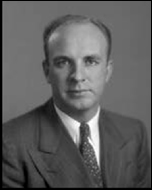 Alvin B. Hayles M.D. Dr. Alvin B. Hayles was born in Atmore, Alabama and received his medical degree from Washington University, Missouri. He served as a medical officer in the United States Navy prior to completing a residency in pediatrics at Mayo Graduate School of Medicine. He practiced pediatrics in Lincoln, Nebraska for two years before returning to Mayo Clinic. A self-taught pediatric endocrinologist, he developed the Division of Pediatric Endocrinology at the Mayo Clinic.
Alvin B. Hayles M.D. Dr. Alvin B. Hayles was born in Atmore, Alabama and received his medical degree from Washington University, Missouri. He served as a medical officer in the United States Navy prior to completing a residency in pediatrics at Mayo Graduate School of Medicine. He practiced pediatrics in Lincoln, Nebraska for two years before returning to Mayo Clinic. A self-taught pediatric endocrinologist, he developed the Division of Pediatric Endocrinology at the Mayo Clinic.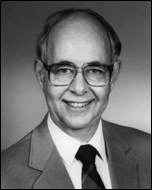 Monte Greer M.D. Dr. Monte Greer, a native of Portland, Oregon, attended Oregon State College where by chance he took a course in endocrinology. This was the beginning of a career in thyroid that would span over 50 years. He completed Stanford Medical School and a fellowship with Dr. Edwin B. Astwood in Boston, Massachusetts, where he discovered yellow turnip blocked the uptake of radioactive iodine by human thyroid. The group eventually isolated the chemical structure of the turnip goitrogen, naming it goitrin. Greer went on to be a senior investigator at the National Cancer Institute where his main interest was the physiology of the hypothalamic-pituitary-thyroid axis, which would be his focus for 40 years. He led the Oregon Health Science University Endocrinology Division for 33 years where he continued his work in the HPT axis along with his daughter, Susan, who collaborated with him for the last two decades of his laboratory work. Dr. Greer pioneered the use of thyroid hormone to treat goiter and thyroid nodules, treating hyperthyroidism with once-a-day antithyroid therapy, and only treating until the patient was euthyroid.
Monte Greer M.D. Dr. Monte Greer, a native of Portland, Oregon, attended Oregon State College where by chance he took a course in endocrinology. This was the beginning of a career in thyroid that would span over 50 years. He completed Stanford Medical School and a fellowship with Dr. Edwin B. Astwood in Boston, Massachusetts, where he discovered yellow turnip blocked the uptake of radioactive iodine by human thyroid. The group eventually isolated the chemical structure of the turnip goitrogen, naming it goitrin. Greer went on to be a senior investigator at the National Cancer Institute where his main interest was the physiology of the hypothalamic-pituitary-thyroid axis, which would be his focus for 40 years. He led the Oregon Health Science University Endocrinology Division for 33 years where he continued his work in the HPT axis along with his daughter, Susan, who collaborated with him for the last two decades of his laboratory work. Dr. Greer pioneered the use of thyroid hormone to treat goiter and thyroid nodules, treating hyperthyroidism with once-a-day antithyroid therapy, and only treating until the patient was euthyroid.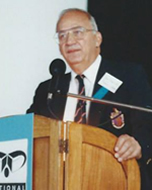 Robert Volpe M.D. Dr. Robert Volpe was born in Toronto and served in the Royal Canadian Navy during the Second World War before enrolling in the University of Toronto Medical School. After completing his residency and fellowship there, he joined the faculty. A Professor Emeritus from the University of Toronto, Dr. Volpe published over 300 journal articles, book chapters, reviews, and editorials including the book, Thyroid Function and Disease. He was a founding member of the Canadian Society for Endocrinology and Metabolism and governor of the Ontario chapter of the American College of Physicians. He played a leading role in the development to the Thyroid Foundation of Canada. He received honorary fellowships by the Royal College of Physicians of Edinburgh in 1992 and of London in 1995. For his significant contributions in Canada, he was appointed an Officer of the Order of Canada in 2003.
Robert Volpe M.D. Dr. Robert Volpe was born in Toronto and served in the Royal Canadian Navy during the Second World War before enrolling in the University of Toronto Medical School. After completing his residency and fellowship there, he joined the faculty. A Professor Emeritus from the University of Toronto, Dr. Volpe published over 300 journal articles, book chapters, reviews, and editorials including the book, Thyroid Function and Disease. He was a founding member of the Canadian Society for Endocrinology and Metabolism and governor of the Ontario chapter of the American College of Physicians. He played a leading role in the development to the Thyroid Foundation of Canada. He received honorary fellowships by the Royal College of Physicians of Edinburgh in 1992 and of London in 1995. For his significant contributions in Canada, he was appointed an Officer of the Order of Canada in 2003.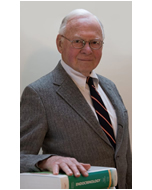 Leslie J. DeGroot M.D. Dr. Leslie J. DeGroot was born on a dairy farm in upstate New York. He attended Columbia University for medical school and after residency, entered the Public Health Service where he worked with Dr. Monte Greer before beginning a research fellowship with Dr. John Stanbury at Massachusetts General Hospital.
Leslie J. DeGroot M.D. Dr. Leslie J. DeGroot was born on a dairy farm in upstate New York. He attended Columbia University for medical school and after residency, entered the Public Health Service where he worked with Dr. Monte Greer before beginning a research fellowship with Dr. John Stanbury at Massachusetts General Hospital.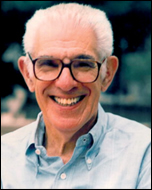 David Becker M.D Dr. David Becker was born in New York City and graduated from Columbia University and the New York University School of Medicine. After graduating he took a research fellowship at Memorial-Sloan-Kettering Cancer Center and began his work on radioiodine. A pioneer in the field of nuclear medicine, he served in the US Army and set up a radioisotope laboratory at Brooke Army medical Center during the Korean War. In 1955 he founded the Division of Nuclear Medicine at New York-Presbyterian Hospital Weill Cornell Medical Center and served as its director for more than 40 years.
David Becker M.D Dr. David Becker was born in New York City and graduated from Columbia University and the New York University School of Medicine. After graduating he took a research fellowship at Memorial-Sloan-Kettering Cancer Center and began his work on radioiodine. A pioneer in the field of nuclear medicine, he served in the US Army and set up a radioisotope laboratory at Brooke Army medical Center during the Korean War. In 1955 he founded the Division of Nuclear Medicine at New York-Presbyterian Hospital Weill Cornell Medical Center and served as its director for more than 40 years.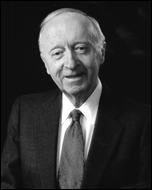 John Maxwell McKenzie M.D. Dr. McKenzie came to the United States from Scotland by way of Canada. He graduated from St. Andrew University in Dundee in 1950, served as a medical officer in Korea, and returned to Dundee to complete his residency. He then moved to Boston to work with Dr. Edwin B. Astwood. In Boston, he developed a mouse thyrotropin bioassay, the McKenzie bioassay for thyrotropin. In 1959, he went to McGill University and became Chief of Endocrinology and Metabolism and remained in Montreal until 1981 after which he moved to the University of Miami where he served as the Chief of Endocrinology and Chair of Medicine. He continued his work as a scientist while serving in his leadership roles. When he retired in 2006, he was honored with a fellowship training program in his name.
John Maxwell McKenzie M.D. Dr. McKenzie came to the United States from Scotland by way of Canada. He graduated from St. Andrew University in Dundee in 1950, served as a medical officer in Korea, and returned to Dundee to complete his residency. He then moved to Boston to work with Dr. Edwin B. Astwood. In Boston, he developed a mouse thyrotropin bioassay, the McKenzie bioassay for thyrotropin. In 1959, he went to McGill University and became Chief of Endocrinology and Metabolism and remained in Montreal until 1981 after which he moved to the University of Miami where he served as the Chief of Endocrinology and Chair of Medicine. He continued his work as a scientist while serving in his leadership roles. When he retired in 2006, he was honored with a fellowship training program in his name.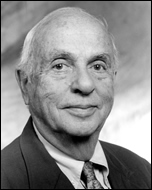 Lewis E. Braverman M.D. MACE, MCAP Dr. Lewis E. Braverman was born in Quincy, MA. He received his medical degree from Johns Hopkins University School of Medicine, completed his residency at Boston City Hospital, and a fellowship under Dr. Sidney H. Ingbar at the Thorndike Memorial Laboratory. He was Chief of Endocrinology at St. Elizabeth’s Hospital in Boston, founding Director of Endocrinology and Chief of Nuclear Medicine at the University of Massachusetts Medical Center and Chief of Endocrinology, Diabetes, and Nutrition at Boston Medical Center, Boston University.
Lewis E. Braverman M.D. MACE, MCAP Dr. Lewis E. Braverman was born in Quincy, MA. He received his medical degree from Johns Hopkins University School of Medicine, completed his residency at Boston City Hospital, and a fellowship under Dr. Sidney H. Ingbar at the Thorndike Memorial Laboratory. He was Chief of Endocrinology at St. Elizabeth’s Hospital in Boston, founding Director of Endocrinology and Chief of Nuclear Medicine at the University of Massachusetts Medical Center and Chief of Endocrinology, Diabetes, and Nutrition at Boston Medical Center, Boston University.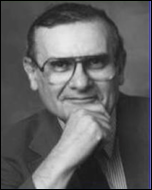
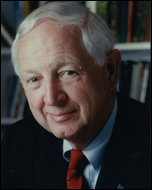 Gerard N. Burrow M.D. Dr. Gerard Burrow was born in Providence, Rhode Island. He earned his medical degree from Yale and completed his endocrine fellowship at Grace-New Haven Hospital before spending two years with the United States Public Health Service in Japan where he studied the effects of prenatal exposure to radiation and developed an interest in radiation-induced thyroid cancer.
Gerard N. Burrow M.D. Dr. Gerard Burrow was born in Providence, Rhode Island. He earned his medical degree from Yale and completed his endocrine fellowship at Grace-New Haven Hospital before spending two years with the United States Public Health Service in Japan where he studied the effects of prenatal exposure to radiation and developed an interest in radiation-induced thyroid cancer.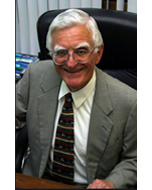 John T. Nicoloff M.D. Dr. John T. Nicoloff received his A.B in zoology and his medical degree from the University of California Los Angeles. After residency, he completed a NIH-sponsored fellowship at the University of Washington. He spent the majority of his career at the University of Southern California where he served as Chief of Division of Endocrinology.
John T. Nicoloff M.D. Dr. John T. Nicoloff received his A.B in zoology and his medical degree from the University of California Los Angeles. After residency, he completed a NIH-sponsored fellowship at the University of Washington. He spent the majority of his career at the University of Southern California where he served as Chief of Division of Endocrinology.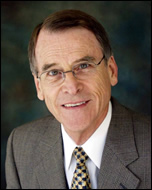 Delbert A. Fisher M.D. Dr. Delbert A. Fisher was born in Placerville, California. He earned his medical degree from the University of California, San Francisco before completing his fellowship in pediatric endocrinology at the University of Oregon. He served as Chief of Pediatrics and Endocrinology at Harbor-UCLA Medical Center, director of the Walter Martin Research Center, President and Chief Officer of Nichols Institute, and Vice President of science and innovation for Quest Diagnostics.
Delbert A. Fisher M.D. Dr. Delbert A. Fisher was born in Placerville, California. He earned his medical degree from the University of California, San Francisco before completing his fellowship in pediatric endocrinology at the University of Oregon. He served as Chief of Pediatrics and Endocrinology at Harbor-UCLA Medical Center, director of the Walter Martin Research Center, President and Chief Officer of Nichols Institute, and Vice President of science and innovation for Quest Diagnostics.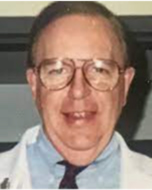 John F. Wilber M.D. Dr. John F. “Jack” Wilber was born in Bronxville, New York. He graduated cum laude from Harvard Medical School in 1961, a member of Alpha Omega Alpha. He completed a fellowship in endocrinology at Barnes Hospital and the Washington University School of Medicine. As a clinical associate of the National Institute of Health, he developed the first successful TSH radio-immunoassay.
John F. Wilber M.D. Dr. John F. “Jack” Wilber was born in Bronxville, New York. He graduated cum laude from Harvard Medical School in 1961, a member of Alpha Omega Alpha. He completed a fellowship in endocrinology at Barnes Hospital and the Washington University School of Medicine. As a clinical associate of the National Institute of Health, he developed the first successful TSH radio-immunoassay.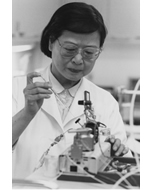 Constance S. Pittman M.D. Dr. Constance Shen-Pittman was born in Nanking, China and trained as a nurse in China before coming to the United States to study at Wellesley College as a Mayling Soong Foundation scholar. She earned her medical degree from Harvard Medical School and interned at the Johns Hopkins Service at Baltimore City Hospital before completing her residency and fellowship at the University of Alabama School of Medicine. She served as Chief of the Endocrinology Service at the Birmingham VA Medical Center for nearly two decades and was a Professor Emeritus of Medicine at University of Alabama at Birmingham.
Constance S. Pittman M.D. Dr. Constance Shen-Pittman was born in Nanking, China and trained as a nurse in China before coming to the United States to study at Wellesley College as a Mayling Soong Foundation scholar. She earned her medical degree from Harvard Medical School and interned at the Johns Hopkins Service at Baltimore City Hospital before completing her residency and fellowship at the University of Alabama School of Medicine. She served as Chief of the Endocrinology Service at the Birmingham VA Medical Center for nearly two decades and was a Professor Emeritus of Medicine at University of Alabama at Birmingham.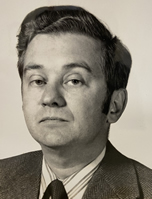 Ralph R. Cavalieri M.D. Dr. Ralph Cavalieri was born in New York City. He graduated summa cum laude from New York University before receiving his medical degree there. He served as chief resident at Bellevue Hospital and then served in the U.S. Naval Hospital in Bethesda, Maryland before going to London as a NATO Fellow at the National Institute for Medical Research. After completing his fellowship at Johns Hopkins, he served as Chief of Nuclear Medicine at the Fort Miley Veterans Affairs Medical Center of San Francisco for 35 years.
Ralph R. Cavalieri M.D. Dr. Ralph Cavalieri was born in New York City. He graduated summa cum laude from New York University before receiving his medical degree there. He served as chief resident at Bellevue Hospital and then served in the U.S. Naval Hospital in Bethesda, Maryland before going to London as a NATO Fellow at the National Institute for Medical Research. After completing his fellowship at Johns Hopkins, he served as Chief of Nuclear Medicine at the Fort Miley Veterans Affairs Medical Center of San Francisco for 35 years.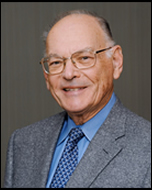 Jerome M. Hershman, MD, MS, MACP Jerome M. Hershman, MD, MS, MACP was Distinguished Professor Emeritus of Medicine at the David Geffen School of Medicine at the University of California, Los Angeles, and Attending Consultant of the Endocrine Clinic at the West Los Angeles VA Medical Center in California. After completing his fellowship at the Tufts New England Medical Center, he joined the faculty in the Department of Medicine at Northwestern University, Chicago, before moving to the University of Alabama, Birmingham, and then to UCLA in 1972.
Jerome M. Hershman, MD, MS, MACP Jerome M. Hershman, MD, MS, MACP was Distinguished Professor Emeritus of Medicine at the David Geffen School of Medicine at the University of California, Los Angeles, and Attending Consultant of the Endocrine Clinic at the West Los Angeles VA Medical Center in California. After completing his fellowship at the Tufts New England Medical Center, he joined the faculty in the Department of Medicine at Northwestern University, Chicago, before moving to the University of Alabama, Birmingham, and then to UCLA in 1972.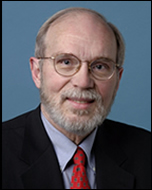 Reed Larsen, MD, FACP, FRCP Philip Reed Larsen, MD has been a member of the Harvard Medical School faculty since 1974 when he became Chief of the Thyroid Division at Brigham and Women’s Hospital in Boston. He was appointed Professor of Medicine in 1982 and served from 2002-2007 as Chief of the Division of Endocrinology, Diabetes and Hypertension. For more than 20 years he has served as a Howard Hughes Investigator.
Reed Larsen, MD, FACP, FRCP Philip Reed Larsen, MD has been a member of the Harvard Medical School faculty since 1974 when he became Chief of the Thyroid Division at Brigham and Women’s Hospital in Boston. He was appointed Professor of Medicine in 1982 and served from 2002-2007 as Chief of the Division of Endocrinology, Diabetes and Hypertension. For more than 20 years he has served as a Howard Hughes Investigator. Leonard Wartofsky, MD, MPH, MACP Leonard “Len” Wartofsky, MD, MPH, MACP is Emeritus Chairman of the Department of Medicine at Washington Hospital Center and a Professor of Medicine at Georgetown University School of Medicine as well as at the Uniformed Services University of the Health Sciences, and George Washington, Howard, and Maryland University Schools of Medicine. He holds MS, MD, and MPH degrees from George Washington University and trained in endocrinology at Harvard University/Boston City Hospital under Sidney Ingbar, MD. At Walter Reed Army Medical Center, he was Director of Endocrinology and then Chair, Department of Medicine, and Consultant in Medicine to the Surgeon General.
Leonard Wartofsky, MD, MPH, MACP Leonard “Len” Wartofsky, MD, MPH, MACP is Emeritus Chairman of the Department of Medicine at Washington Hospital Center and a Professor of Medicine at Georgetown University School of Medicine as well as at the Uniformed Services University of the Health Sciences, and George Washington, Howard, and Maryland University Schools of Medicine. He holds MS, MD, and MPH degrees from George Washington University and trained in endocrinology at Harvard University/Boston City Hospital under Sidney Ingbar, MD. At Walter Reed Army Medical Center, he was Director of Endocrinology and then Chair, Department of Medicine, and Consultant in Medicine to the Surgeon General.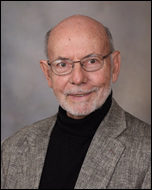 Colum A. Gorman, MBBCh, PhD, MB, BCh Colum Gorman, MBBCh, PhD, MB, BCh, a native of Northern Ireland, joined the Mayo Clinic School of Medicine and Science as a Fellow in Internal Medicine in 1965. He served as Professor of Medicine, Chair of the Division of Endocrinology, Diabetes, Metabolism and Nutrition, and Associate Director for Research Development at the Mayo Clinic in Rochester, Minnesota. Dr. Gorman retired in 2012 as Emeritus Professor of Medicine.
Colum A. Gorman, MBBCh, PhD, MB, BCh Colum Gorman, MBBCh, PhD, MB, BCh, a native of Northern Ireland, joined the Mayo Clinic School of Medicine and Science as a Fellow in Internal Medicine in 1965. He served as Professor of Medicine, Chair of the Division of Endocrinology, Diabetes, Metabolism and Nutrition, and Associate Director for Research Development at the Mayo Clinic in Rochester, Minnesota. Dr. Gorman retired in 2012 as Emeritus Professor of Medicine.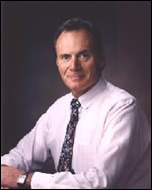 Chester Ridgway, MD Chester Ridgway, MD, “Chip” to his family, friends, and colleagues, followed his primary care physician father into the practice of medicine. He received his undergraduate degree at Dartmouth College and his MD degree from the University of Colorado Medical School. Following his residency and fellowship at Harvard Medical School, he joined the faculty at Harvard University and the Massachusetts General Hospital where he was Head of the Thyroid Unit. In 1985 he returned to the University of Colorado School of Medicine as the Head of the Division of Endocrinology, Metabolism and Diabetes, a position he held until 2007. In 1995 Dr. Ridgway was appointed Senior Associate Dean for Academic Affairs within the School of Medicine. In 2006 he was appointed Vice Chair for the Department of Medicine and Interim Chair for the Department of Medicine in 2010.
Chester Ridgway, MD Chester Ridgway, MD, “Chip” to his family, friends, and colleagues, followed his primary care physician father into the practice of medicine. He received his undergraduate degree at Dartmouth College and his MD degree from the University of Colorado Medical School. Following his residency and fellowship at Harvard Medical School, he joined the faculty at Harvard University and the Massachusetts General Hospital where he was Head of the Thyroid Unit. In 1985 he returned to the University of Colorado School of Medicine as the Head of the Division of Endocrinology, Metabolism and Diabetes, a position he held until 2007. In 1995 Dr. Ridgway was appointed Senior Associate Dean for Academic Affairs within the School of Medicine. In 2006 he was appointed Vice Chair for the Department of Medicine and Interim Chair for the Department of Medicine in 2010. Paul J. Davis, MD, MACP Paul J. Davis, MD, MACP is Professor of Medicine at Albany Medical College in Albany, New York and Adjunct Professor of Pharmacy at Albany College of Pharmacy and Health Sciences. He is also Executive Vice President and Chief Scientific Officer at NanoPharmaceuticals LLC in Rensselaer, New York.
Paul J. Davis, MD, MACP Paul J. Davis, MD, MACP is Professor of Medicine at Albany Medical College in Albany, New York and Adjunct Professor of Pharmacy at Albany College of Pharmacy and Health Sciences. He is also Executive Vice President and Chief Scientific Officer at NanoPharmaceuticals LLC in Rensselaer, New York. Orlo H. Clark, MD Orlo H. Clark, MD is Emeritus Professor of Surgery in the Department of Surgery at the University of California, San Francisco. He completed a fellowship in endocrine surgery at the Hammersmith Hospital/Royal Postgraduate Medical Center in London and joined the UCSF faculty in 1973.
Orlo H. Clark, MD Orlo H. Clark, MD is Emeritus Professor of Surgery in the Department of Surgery at the University of California, San Francisco. He completed a fellowship in endocrine surgery at the Hammersmith Hospital/Royal Postgraduate Medical Center in London and joined the UCSF faculty in 1973.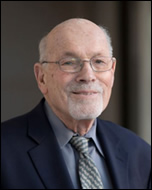 Martin I. Surks, MD Martin I. Surks is Professor of Medicine and Pathology at Albert Einstein College of Medicine and Program Director, Endocrinology and Metabolism, in the Department of Medicine at Montefiore Medical Center in New York. A member of the American Board of Internal Medicine subspecialty committee on Endocrinology, Diabetes and Metabolism, he was a founding member of the American Association of Program Directors of Endocrinology and Metabolism and later served as its president. Dr. Surks led a collaborative project resulting in a curriculum for endocrinology training programs widely used today and is the chair of the Endocrine Self-Assessment Program of the Endocrine Society.
Martin I. Surks, MD Martin I. Surks is Professor of Medicine and Pathology at Albert Einstein College of Medicine and Program Director, Endocrinology and Metabolism, in the Department of Medicine at Montefiore Medical Center in New York. A member of the American Board of Internal Medicine subspecialty committee on Endocrinology, Diabetes and Metabolism, he was a founding member of the American Association of Program Directors of Endocrinology and Metabolism and later served as its president. Dr. Surks led a collaborative project resulting in a curriculum for endocrinology training programs widely used today and is the chair of the Endocrine Self-Assessment Program of the Endocrine Society.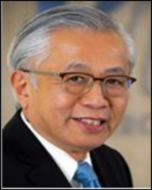 William Waiman Chin, MD William W. Chin, MD is Emeritus Professor of Medicine and Bertarelli Professor of Translational Medical Science, Emeritus, at Harvard Medical School in Boston. During his tenure as a faculty member in the Department of Medicine at Brigham and Women’s Hospital, he served as Chief of the Genetics Division, Executive Dean of Research, and as a Howard Hughes Medical Institute investigator, as well as Professor of Medicine and Obstetrics, Gynecology, and Reproductive Biology at Harvard Medical School.
William Waiman Chin, MD William W. Chin, MD is Emeritus Professor of Medicine and Bertarelli Professor of Translational Medical Science, Emeritus, at Harvard Medical School in Boston. During his tenure as a faculty member in the Department of Medicine at Brigham and Women’s Hospital, he served as Chief of the Genetics Division, Executive Dean of Research, and as a Howard Hughes Medical Institute investigator, as well as Professor of Medicine and Obstetrics, Gynecology, and Reproductive Biology at Harvard Medical School.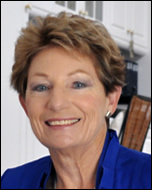 Carole Ann Spencer, PhD, FACB Carole Spencer, educated in England and Scotland, is Professor of Research Medicine in the Keck School of Medicine of the University of Southern California where she is a licensed Medical Technologist and the Technical Director of the USC Endocrine Services Laboratory. The author of over a hundred original papers, chapters, and monographs, she has focused her research interests on thyroglobulin and thyroid cancers, parameters for optimizing thyroid hormone suppression of TSH for DTC, hypothalamic/pituitary mechanisms for regulating TSH, and testing for thyroid dysfunction during pregnancy.
Carole Ann Spencer, PhD, FACB Carole Spencer, educated in England and Scotland, is Professor of Research Medicine in the Keck School of Medicine of the University of Southern California where she is a licensed Medical Technologist and the Technical Director of the USC Endocrine Services Laboratory. The author of over a hundred original papers, chapters, and monographs, she has focused her research interests on thyroglobulin and thyroid cancers, parameters for optimizing thyroid hormone suppression of TSH for DTC, hypothalamic/pituitary mechanisms for regulating TSH, and testing for thyroid dysfunction during pregnancy.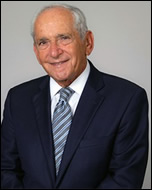 Peter A. Singer, MD Peter A. Singer, MD is Professor of Clinical Medicine at the Keck School of Medicine of the University of Southern California and Director of the USC Thyroid Diagnostic Center. He has received multiple professional awards recognizing his efforts in clinical practice and medical education, including the 2013 Distinguished Service Award from the American Thyroid Association, the 2020 Vigersky Outstanding Clinical Practitioner Award from the Endocrine Society, the 2004 Outstanding Clinical Endocrinologist Award and the 2017 Award in the Humanities and Ethics from the American Association of Clinical Endocrinologists, and the 2018 Excellence in Science Award from the Vietnam Veterans of America. For over 40 years, Dr. Singer has chaired an annual thyroidology symposium for primary care physicians.
Peter A. Singer, MD Peter A. Singer, MD is Professor of Clinical Medicine at the Keck School of Medicine of the University of Southern California and Director of the USC Thyroid Diagnostic Center. He has received multiple professional awards recognizing his efforts in clinical practice and medical education, including the 2013 Distinguished Service Award from the American Thyroid Association, the 2020 Vigersky Outstanding Clinical Practitioner Award from the Endocrine Society, the 2004 Outstanding Clinical Endocrinologist Award and the 2017 Award in the Humanities and Ethics from the American Association of Clinical Endocrinologists, and the 2018 Excellence in Science Award from the Vietnam Veterans of America. For over 40 years, Dr. Singer has chaired an annual thyroidology symposium for primary care physicians.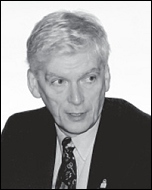 Clark T. Sawin, MD Clark Timothy Sawin, MD, a Boston native, completed a U.S. Public Health postdoctoral research fellowship in endocrinology at the New England Medical Center Hospitals and joined the faculty at Tufts University Medical School as Professor of Medicine in 1966 and at Boston University Medical School in 1994. He served as chief of the endocrine-diabetes section at the Boston VA Medical Center from 1996 to 1998 and, until his death in 2004, served in Washington, DC as chief medical quality control officer for the VA health care system nationwide. He also served on the editorial boards of Thyroid, the Journal of Clinical Endocrinology and Metabolism, and Endocrine Practice.
Clark T. Sawin, MD Clark Timothy Sawin, MD, a Boston native, completed a U.S. Public Health postdoctoral research fellowship in endocrinology at the New England Medical Center Hospitals and joined the faculty at Tufts University Medical School as Professor of Medicine in 1966 and at Boston University Medical School in 1994. He served as chief of the endocrine-diabetes section at the Boston VA Medical Center from 1996 to 1998 and, until his death in 2004, served in Washington, DC as chief medical quality control officer for the VA health care system nationwide. He also served on the editorial boards of Thyroid, the Journal of Clinical Endocrinology and Metabolism, and Endocrine Practice.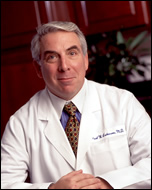 Paul W. Ladenson, MD Paul W. Ladenson, MD is the John Eager Howard Professor of Endocrinology and Metabolism and Professor of Medicine, Pathology, Oncology, Radiology, and Radiological Sciences at Johns Hopkins University School of Medicine, where he is also University Distinguished Professor. Dr. Ladenson was raised in Missouri and educated at Dartmouth College, Oxford University, and Harvard Medical School before training at Massachusetts General Hospital. Dr. Ladenson’s principal research interests have focused on the diagnosis and management of thyroid cancer, thyroid hormone actions on the heart, and applications of thyroid hormone analogs.
Paul W. Ladenson, MD Paul W. Ladenson, MD is the John Eager Howard Professor of Endocrinology and Metabolism and Professor of Medicine, Pathology, Oncology, Radiology, and Radiological Sciences at Johns Hopkins University School of Medicine, where he is also University Distinguished Professor. Dr. Ladenson was raised in Missouri and educated at Dartmouth College, Oxford University, and Harvard Medical School before training at Massachusetts General Hospital. Dr. Ladenson’s principal research interests have focused on the diagnosis and management of thyroid cancer, thyroid hormone actions on the heart, and applications of thyroid hormone analogs.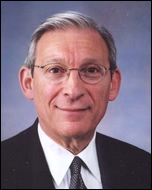 Ernest L. Mazzaferri, Sr., MD, MACP Ernest L. Mazzaferri, Sr., MD, MACP, “Ernie” to his family, friends, and colleagues, spent most of his career at the Ohio State University School of Medicine where he served as Director of the Division of Endocrinology, Diabetes, and Metabolism and Chair of Internal Medicine. He subsequently “retired” from his leading role at OSU and became an active faculty member at the University of Florida in Gainesville. In addition to his role as physician, educator, mentor, and researcher, known for his groundbreaking work in thyroid cancer management, he served as Lieutenant Colonel in the U.S. Air Force Medical Corps and the U.S. Army Reserves, a responsibility that included active-duty service during Desert Storm at Madigan Army Medical Center in Tacoma, Washington.
Ernest L. Mazzaferri, Sr., MD, MACP Ernest L. Mazzaferri, Sr., MD, MACP, “Ernie” to his family, friends, and colleagues, spent most of his career at the Ohio State University School of Medicine where he served as Director of the Division of Endocrinology, Diabetes, and Metabolism and Chair of Internal Medicine. He subsequently “retired” from his leading role at OSU and became an active faculty member at the University of Florida in Gainesville. In addition to his role as physician, educator, mentor, and researcher, known for his groundbreaking work in thyroid cancer management, he served as Lieutenant Colonel in the U.S. Air Force Medical Corps and the U.S. Army Reserves, a responsibility that included active-duty service during Desert Storm at Madigan Army Medical Center in Tacoma, Washington. David S. Cooper, MD, MACP David S. Cooper, MD, MACP is Professor of Medicine and Radiology at the Johns Hopkins University School of Medicine and Professor of International Health at the Bloomberg Johns Hopkins School of Public Health.
David S. Cooper, MD, MACP David S. Cooper, MD, MACP is Professor of Medicine and Radiology at the Johns Hopkins University School of Medicine and Professor of International Health at the Bloomberg Johns Hopkins School of Public Health.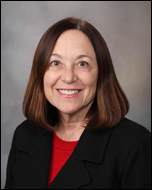 Rebecca S. Bahn, MD Rebecca S. Bahn, MD is Professor Emeritus of Medicine at the Mayo Clinic and is recognized for her over 30 years of work on thyroid-related eye disease. She also is the Director of the Women’s Health Research Center and Associate Dean of Research for Career Development at the Mayo Clinic. Dr. Bahn continues to study the causes of Graves’ ophthalmopathy, Graves’ hyperthyroidism and other autoimmune thyroid diseases and has been at the forefront in developing novel therapies for the treatment and prevention of these conditions.
Rebecca S. Bahn, MD Rebecca S. Bahn, MD is Professor Emeritus of Medicine at the Mayo Clinic and is recognized for her over 30 years of work on thyroid-related eye disease. She also is the Director of the Women’s Health Research Center and Associate Dean of Research for Career Development at the Mayo Clinic. Dr. Bahn continues to study the causes of Graves’ ophthalmopathy, Graves’ hyperthyroidism and other autoimmune thyroid diseases and has been at the forefront in developing novel therapies for the treatment and prevention of these conditions.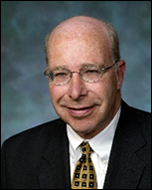 Kenneth D. Burman, MD, MACP Kenneth Dale Burman, MD, MACP is Professor of Medicine in the Department of Medicine at Georgetown University, Washington, DC, Chief of the Endocrine Section and Director of the Integrated Endocrine Training Program at Georgetown University/MedStar Washington Hospital Center. Dr. Burman completed his endocrine fellowship at Walter Reed Army Medical Center in Washington, DC before moving to the MedStar Washington Medical Center. His research interests are focused on the molecular mechanisms underlying the progression of thyroid cancer and its application in developing novel and more specific and personalized treatments
Kenneth D. Burman, MD, MACP Kenneth Dale Burman, MD, MACP is Professor of Medicine in the Department of Medicine at Georgetown University, Washington, DC, Chief of the Endocrine Section and Director of the Integrated Endocrine Training Program at Georgetown University/MedStar Washington Hospital Center. Dr. Burman completed his endocrine fellowship at Walter Reed Army Medical Center in Washington, DC before moving to the MedStar Washington Medical Center. His research interests are focused on the molecular mechanisms underlying the progression of thyroid cancer and its application in developing novel and more specific and personalized treatments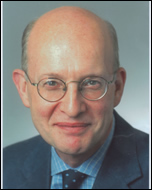 Terry F. Davies MD, FRCP Terry Francis Davies, MD, FRCP is the Florence and Theodore Baumritter Professor of Medicine at the Icahn School of Medicine at Mount Sinai in New York City and Director Emeritus of the Division of Endocrinology, Diabetes and Bone Diseases. Dr. Davies is also a part-time physician at the James J. Peters VA Medical Center in the Bronx, New York. Dr. Davies was trained in the UK at the Newcastle University and after further research experience at the National Institutes of Health in Bethesda, Maryland, he has spent most of his career in New York at Mount Sinai. Dr. Davies has focused his basic research efforts in the areas of immunology, cell biology and genetics as these relate to thyroid disease. He has focused his clinical efforts in autoimmune thyroid disease (AITD) and AITD in pregnancy.
Terry F. Davies MD, FRCP Terry Francis Davies, MD, FRCP is the Florence and Theodore Baumritter Professor of Medicine at the Icahn School of Medicine at Mount Sinai in New York City and Director Emeritus of the Division of Endocrinology, Diabetes and Bone Diseases. Dr. Davies is also a part-time physician at the James J. Peters VA Medical Center in the Bronx, New York. Dr. Davies was trained in the UK at the Newcastle University and after further research experience at the National Institutes of Health in Bethesda, Maryland, he has spent most of his career in New York at Mount Sinai. Dr. Davies has focused his basic research efforts in the areas of immunology, cell biology and genetics as these relate to thyroid disease. He has focused his clinical efforts in autoimmune thyroid disease (AITD) and AITD in pregnancy. Gregory A. Brent, MD Gregory A. Brent, MD is Professor of Medicine and Physiology and Chief of the Division of Endocrinology, Diabetes and Metabolism in David Geffen School of Medicine at the University of California, Los Angeles. He is Chair of the Department of Medicine in VA Greater Los Angeles Healthcare System. His research focus is on the molecular mechanisms of thyroid hormone action in metabolic regulation and neural differentiation, and the regulation of iodine transport in hormone-dependent cancers. He has conducted clinical research in thyroid disease in pregnancy and in chronic kidney disease patients.
Gregory A. Brent, MD Gregory A. Brent, MD is Professor of Medicine and Physiology and Chief of the Division of Endocrinology, Diabetes and Metabolism in David Geffen School of Medicine at the University of California, Los Angeles. He is Chair of the Department of Medicine in VA Greater Los Angeles Healthcare System. His research focus is on the molecular mechanisms of thyroid hormone action in metabolic regulation and neural differentiation, and the regulation of iodine transport in hormone-dependent cancers. He has conducted clinical research in thyroid disease in pregnancy and in chronic kidney disease patients.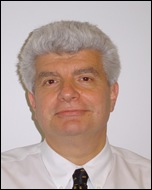 James A. Fagin MD James A. Fagin, MD is Head of the Division of Subspecialty Medicine and a Member of the Human Oncology and Pathogenesis Program (HOPP) at MSKCC, and a Professor of Medicine at the Weill Cornell Medical College of Cornell University.
James A. Fagin MD James A. Fagin, MD is Head of the Division of Subspecialty Medicine and a Member of the Human Oncology and Pathogenesis Program (HOPP) at MSKCC, and a Professor of Medicine at the Weill Cornell Medical College of Cornell University.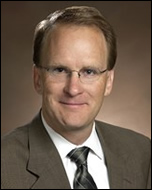
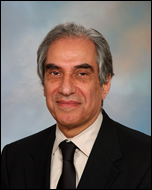 Hossein Gharib, MD, MACP, MACE Hossein Gharib, MD, MACP, MACE is Professor of Medicine and Consultant in Endocrinology, Metabolism, and Diabetes at the Mayo Clinic in Rochester, Minnesota. Born in Iran and following in the footsteps of his physician father, he completed a fellowship in endocrinology and metabolism at the Mayo Clinic where he joined the clinical staff in 1972. He has served as an editorial board member for many journals including Thyroid, Journal of Clinical Endocrinology and Metabolism, Endocrine Practice, Acta Endocrinologica (Buc), and US Endocrinology.
Hossein Gharib, MD, MACP, MACE Hossein Gharib, MD, MACP, MACE is Professor of Medicine and Consultant in Endocrinology, Metabolism, and Diabetes at the Mayo Clinic in Rochester, Minnesota. Born in Iran and following in the footsteps of his physician father, he completed a fellowship in endocrinology and metabolism at the Mayo Clinic where he joined the clinical staff in 1972. He has served as an editorial board member for many journals including Thyroid, Journal of Clinical Endocrinology and Metabolism, Endocrine Practice, Acta Endocrinologica (Buc), and US Endocrinology.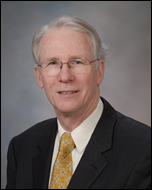 Robert C. Smallridge, MD Robert C. Smallridge, MD is Emeritus Professor of Medicine at Mayo Medical School and Emeritus Alfred D. and Audrey M. Peterson Professor of Cancer Research. Before he retired in 2019, Dr. Smallridge served as Deputy Director in the Mayo Clinic Cancer Center and as the Chair of the Division of Endocrinology, the Director of Research, and as a member of the Board of Governors. Prior to joining the Mayo Clinic, Dr. Smallridge retired as Colonel after 23 years in the U.S. Army Medical Corps. He served as the Director of the Department of Medicine at Walter Reed Army Institute of Research, as Chair of the Endocrinology Division at the Uniformed Services University of the Health Sciences, and as the Endocrinology Consultant to the Attending Physician for members of Congress.
Robert C. Smallridge, MD Robert C. Smallridge, MD is Emeritus Professor of Medicine at Mayo Medical School and Emeritus Alfred D. and Audrey M. Peterson Professor of Cancer Research. Before he retired in 2019, Dr. Smallridge served as Deputy Director in the Mayo Clinic Cancer Center and as the Chair of the Division of Endocrinology, the Director of Research, and as a member of the Board of Governors. Prior to joining the Mayo Clinic, Dr. Smallridge retired as Colonel after 23 years in the U.S. Army Medical Corps. He served as the Director of the Department of Medicine at Walter Reed Army Institute of Research, as Chair of the Endocrinology Division at the Uniformed Services University of the Health Sciences, and as the Endocrinology Consultant to the Attending Physician for members of Congress.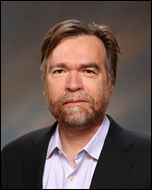 Antonio C. Bianco, MD, PhD Antonio Bianco, MD, PhD is Professor of Medicine in the Section of Endocrinology, Diabetes, and Metabolism at the University of Chicago. A physician-scientist trained in São Paulo, Brazil, he has focused his research efforts on how the systemic hormone T3 initiates or terminates critical biological steps while maintaining relatively stable levels in the circulation. His work has established the importance of local regulation of TH metabolism provided by deiodinases D1, D2, and D3 on a tissue-specific basis. He has published over 260 peer-reviewed articles focused on thyroid hormone metabolism and action, with implications for the treatment of patients with hypothyroidism.
Antonio C. Bianco, MD, PhD Antonio Bianco, MD, PhD is Professor of Medicine in the Section of Endocrinology, Diabetes, and Metabolism at the University of Chicago. A physician-scientist trained in São Paulo, Brazil, he has focused his research efforts on how the systemic hormone T3 initiates or terminates critical biological steps while maintaining relatively stable levels in the circulation. His work has established the importance of local regulation of TH metabolism provided by deiodinases D1, D2, and D3 on a tissue-specific basis. He has published over 260 peer-reviewed articles focused on thyroid hormone metabolism and action, with implications for the treatment of patients with hypothyroidism. John C. Morris, III, MD John C. Morris, III, MD is Professor of Medicine at Mayo Clinic School of Medicine and past Chair of the Division of Endocrinology, Diabetes, Metabolism, and Nutrition. He also has a joint-appointment in the Division of Medical Oncology, where he sees patients with advanced endocrine malignancies. Since his appointment to the Mayo consulting staff, Dr. Morris has been involved in clinical practice, education, and research, with a special emphasis on thyroid disease and thyroid cancer. He also directs research into the role of sodium-iodide symporter as a novel therapeutic gene for cancer gene therapy, applying this approach to metastatic, hormone-resistant prostate cancer.
John C. Morris, III, MD John C. Morris, III, MD is Professor of Medicine at Mayo Clinic School of Medicine and past Chair of the Division of Endocrinology, Diabetes, Metabolism, and Nutrition. He also has a joint-appointment in the Division of Medical Oncology, where he sees patients with advanced endocrine malignancies. Since his appointment to the Mayo consulting staff, Dr. Morris has been involved in clinical practice, education, and research, with a special emphasis on thyroid disease and thyroid cancer. He also directs research into the role of sodium-iodide symporter as a novel therapeutic gene for cancer gene therapy, applying this approach to metastatic, hormone-resistant prostate cancer.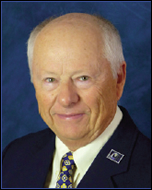 Charles H. Emerson, MD Charles H. Emerson, MD is Professor Emeritus of Medicine in the University of Massachusetts Medical School (UMASSMED). He obtained an MD degree from the University of Virginia and, after a year of endocrine fellowship at the University of Pennsylvania in Philadelphia, he served as Chief of Endocrinology at the U.S. Army Medical Center in Augusta, Georgia. After military service, he returned to the University of Pennsylvania to complete his endocrine fellowship and work on purifying thyroid stimulating antigen, the kinetics of thyrotropin releasing hormone (TRH), inappropriate TSH secretion, and the effects of lithium and stable iodine on thyroid function. In 1974 he moved to the University of Illinois where he worked on developing assays for TRH metabolites and an endogenous TRH antibody binding ligand in urine. In 1980 Dr. Emerson joined UMASSMED as Professor of Medicine and focused his research on thyroid hormone metabolism in the chorion and placenta of various species.
Charles H. Emerson, MD Charles H. Emerson, MD is Professor Emeritus of Medicine in the University of Massachusetts Medical School (UMASSMED). He obtained an MD degree from the University of Virginia and, after a year of endocrine fellowship at the University of Pennsylvania in Philadelphia, he served as Chief of Endocrinology at the U.S. Army Medical Center in Augusta, Georgia. After military service, he returned to the University of Pennsylvania to complete his endocrine fellowship and work on purifying thyroid stimulating antigen, the kinetics of thyrotropin releasing hormone (TRH), inappropriate TSH secretion, and the effects of lithium and stable iodine on thyroid function. In 1974 he moved to the University of Illinois where he worked on developing assays for TRH metabolites and an endogenous TRH antibody binding ligand in urine. In 1980 Dr. Emerson joined UMASSMED as Professor of Medicine and focused his research on thyroid hormone metabolism in the chorion and placenta of various species.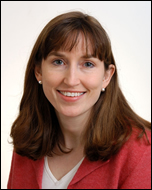 Elizabeth N. Pearce, MD Elizabeth N. Pearce, MD is Professor of Medicine at Boston University School of Medicine in the Section of Endocrinology, Diabetes, and Nutrition. She received her undergraduate and medical degrees from Harvard and a master’s degree in epidemiology from the Boston University School of Public Health. She has been an active member of the American Thyroid Association and serves as the Regional Coordinator for North America for the Iodine Global Network. She has served as a Deputy Editor for the Journal of Clinical Endocrinology and Metabolism, as an Associate Editor for the journals Thyroid, Clinical Thyroidology, and Endocrine Practice, and has served on multiple additional editorial boards. She co-chaired the ATA 2017 Thyroid in Pregnancy Guidelines Task Force.
Elizabeth N. Pearce, MD Elizabeth N. Pearce, MD is Professor of Medicine at Boston University School of Medicine in the Section of Endocrinology, Diabetes, and Nutrition. She received her undergraduate and medical degrees from Harvard and a master’s degree in epidemiology from the Boston University School of Public Health. She has been an active member of the American Thyroid Association and serves as the Regional Coordinator for North America for the Iodine Global Network. She has served as a Deputy Editor for the Journal of Clinical Endocrinology and Metabolism, as an Associate Editor for the journals Thyroid, Clinical Thyroidology, and Endocrine Practice, and has served on multiple additional editorial boards. She co-chaired the ATA 2017 Thyroid in Pregnancy Guidelines Task Force.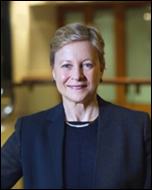
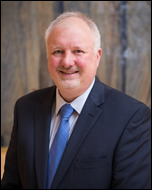 Victor J. Bernet, MD, FACE, FACP
Victor J. Bernet, MD, FACE, FACP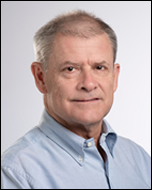 Peter Kopp, MD Peter Kopp, MD, a native of Switzerland, received his medical degree from the University of Berne. After completing his training in Internal Medicine and Endocrinology at his alma mater, he moved to Northwestern University Feinberg School of Medicine in Chicago where he served as Professor of Medicine and as acting director of the Center for Genetic Medicine (CGM). In 2018, he returned to Switzerland to assume his current role as Professor of Medicine and Médecin Chef in the Division of Endocrinology, Diabetology and Metabolism at the University of Lausanne, Switzerland. He also continues to hold an Adjunct Professorship at Northwestern University.
Peter Kopp, MD Peter Kopp, MD, a native of Switzerland, received his medical degree from the University of Berne. After completing his training in Internal Medicine and Endocrinology at his alma mater, he moved to Northwestern University Feinberg School of Medicine in Chicago where he served as Professor of Medicine and as acting director of the Center for Genetic Medicine (CGM). In 2018, he returned to Switzerland to assume his current role as Professor of Medicine and Médecin Chef in the Division of Endocrinology, Diabetology and Metabolism at the University of Lausanne, Switzerland. He also continues to hold an Adjunct Professorship at Northwestern University.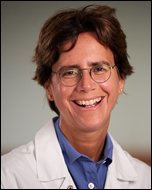 Julie Ann Sosa, MD, MA, FACS Julie Ann Sosa, MD, MA, FACS, born in Montreal and raised in upstate New York, received her AB at Princeton, MA at Oxford, and MD at Johns Hopkins, where she completed the Halsted residency and a fellowship. She is the Leon Goldman MD Distinguished Professor of Surgery and Chair of the Department of Surgery at the University of California San Francisco (UCSF), where she is also Professor in the Department of Medicine and affiliated faculty for the Philip R. Lee Institute for Health Policy Studies. Her clinical interest is in endocrine surgery, with a focus in thyroid cancer.
Julie Ann Sosa, MD, MA, FACS Julie Ann Sosa, MD, MA, FACS, born in Montreal and raised in upstate New York, received her AB at Princeton, MA at Oxford, and MD at Johns Hopkins, where she completed the Halsted residency and a fellowship. She is the Leon Goldman MD Distinguished Professor of Surgery and Chair of the Department of Surgery at the University of California San Francisco (UCSF), where she is also Professor in the Department of Medicine and affiliated faculty for the Philip R. Lee Institute for Health Policy Studies. Her clinical interest is in endocrine surgery, with a focus in thyroid cancer.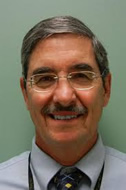 Michael McDermott, MD is Professor of Medicine and Clinical Pharmacy at the University of Colorado Denver School of Medicine and Director of the Endocrinology and Diabetes Practice at the University of Colorado Hospital. He graduated from Tulane Medical School in 1977. His Internal Medicine Internship and Residency (1977-1980), and Endocrinology and Metabolism Fellowship (1980-1982) were completed at Fitzsimons Army Medical Center in Aurora, Colorado. He spent 20 years in the US Army during which time he was the Chief of Endocrinology at Fitzsimons (1993-1997) and served as the Endocrinology Consultant to the Surgeon General (1994-1997). He has been a member of the ATA since 1992 and has been the ATA CME Director since 2009. He served on the ATA Board of Directors 2007-2010. He was the Program Chair for the ATA annual meeting in New York in 2007 and has served on multiple ATA committees: Program Committee, Finance and Audit Committee, Publications Committee, Website Committee, Lab Services Committee, Webinar Program Committee, Development Committee, Corporate Leadership Council and ATA Centennial Task Force.
Michael McDermott, MD is Professor of Medicine and Clinical Pharmacy at the University of Colorado Denver School of Medicine and Director of the Endocrinology and Diabetes Practice at the University of Colorado Hospital. He graduated from Tulane Medical School in 1977. His Internal Medicine Internship and Residency (1977-1980), and Endocrinology and Metabolism Fellowship (1980-1982) were completed at Fitzsimons Army Medical Center in Aurora, Colorado. He spent 20 years in the US Army during which time he was the Chief of Endocrinology at Fitzsimons (1993-1997) and served as the Endocrinology Consultant to the Surgeon General (1994-1997). He has been a member of the ATA since 1992 and has been the ATA CME Director since 2009. He served on the ATA Board of Directors 2007-2010. He was the Program Chair for the ATA annual meeting in New York in 2007 and has served on multiple ATA committees: Program Committee, Finance and Audit Committee, Publications Committee, Website Committee, Lab Services Committee, Webinar Program Committee, Development Committee, Corporate Leadership Council and ATA Centennial Task Force.
